
Will Anything Happen?
or
The Early History Of Blondie Up Till The Making Of Their First Album

Will Anything Happen?
or
The Early History Of Blondie Up Till The Making Of Their First Album
(Note: August, September or October 1973 seems to be the commonly accepted date for the kick-off of the Blondie precursor band The Stillettoes*. However, some accounts place The Stillettoes as extant in some form as early as 1972. It's also possible there was/is some sort of cross-over or cross-confusion with co-founder Elda Gentile's previous outfit, Pure Garbage. It does stretch the imagination a little to believe that the long list of transient personnel given in the next section all went through The Stillettoes (Mk 1) in just a scant few months. So maybe The Stillettoes started in some form before autumn 1973, perhaps unnamed or/and intermittent at first? Especially as Debbie has said that: We didn't get the name right away. Elda came up with it later.)
Anyway...
Debbie: I heard about the group [Holly Woodlawn's Pure Garbage] and wanted to join, but by the time I got in touch with Elda, they'd split up. Elda: Our show at Reno Sweeney's, a cabaret club in the West Village [126 West Thirteenth Street], was fantastic. Holly [Woodlawn, a former Warhol superstar] was offered training to develop a cabaret show and I encouraged her to accept the offer. Cutting her loose was a gift to her.
(*This isn't the correct spelling as per the type of shoes, but this is how flyers and advertisements generally billed the band.)
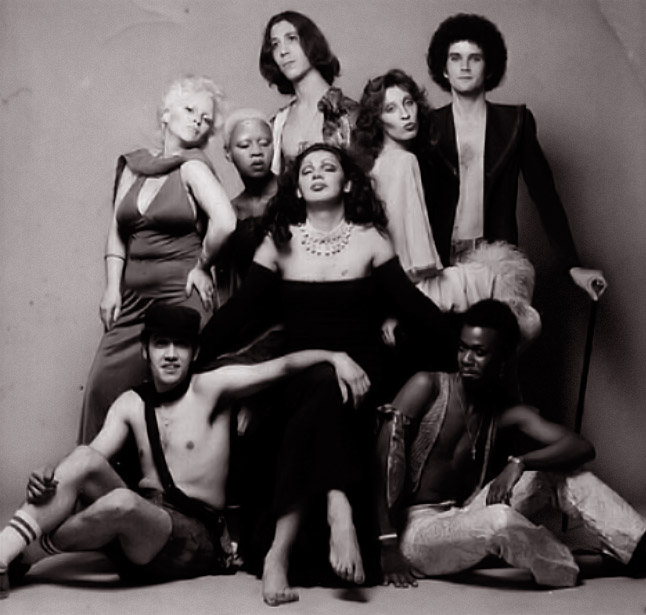
Elda Gentile (aka Elda Stilletto) and Debbie Harry form (or at least crystallize – see first paragraph) The Stillettoes after meeting at a New York Dolls gig at Max's Kansas City (213 Park Avenue South). Debbie: She came in looking very extreme, wearing a brassiere and a half-slip to dance around in, and garish makeup. She was really ahead of her time. Rosie Ross (aka Roseanne Trapani) is the third singer.
Elda: I had made a deal with Jayne County to allow her PA system to remain in my loft in exchange for free rehearsal time and that allowed me to put together the Stillettoes. ... It was definitely my group from the start. And that meant that I paid for most things while we were setting up the group. I didn't mind making the necessary investments to make it happen. But for Debbie and Rosie it was just a turnkey operation – they just had to show up, be happy, and perform. But ... easier said than done.
The backing band is incredibly fluid and those helping out for short periods around this time include: Tommy Wynbrandt (guitar, later in The Miamis), Jimmy Wynbrandt (guitar, also later in The Miamis), Marky Ramone (drums), Timothy Jackson (aka Tot/Thoth, ex Zero, drums), Alter Ego (aka Walter Ego, aka Walter Greenberg, also ex Pure Garbage, bass), Tommy Marcus (also later in The Miamis, bass), Young Blood (aka Xavier, ex The Magic Tramps), "Tom" (later called "Vanessa", guitar), Fast Eddie Gentile??? (also ex Pure Garbage, and Elda's brother, guitar).
Elda: All my lyrics were tongue-in-cheek humor. Rosie drew her material from existing songs but I felt with time we could write for her. With Debbie it was the same – she covered songs but didn't write.
Debbie: We didn't really know what we were doing when we started. We did some Tina Turner songs and a few by The Rolling Stones. We weren't that good; we were just learning. All we wanted to do was songs that had a hook in them, that were danceable, because up to that point everybody was watching these long guitar solos and good old boys singing about "the road" ... and it didn't relate to our urban experience at all. It was just middle-America music and we were sick of it.
Underground theater writer/producer/director, Tony Ingrassia, masterminds the group's choreography and staging. Debbie: He worked on the songs with us, concentrating on a mood, projecting a mood through song [and] stage tricks to give us a cohesive look. Tony insisted on full attention and dedication from us. He worked us like we were truant little girls from Catholic high school. A real slave driver; the whip was cracking.
Debbie: Musically, it was a real mishmash: a little bit campy show tune, a little bit girl group, a little bit R & B, and a little bit glitter rock; all of us were enamored of the [New York] Dolls. We were all very different characters too. Roseanne, who was into blues and R & B, was this Italian girl from Queens, a lesbian and a feminist, very angry at the way women were treated. Elda, who was into cabaret, was this intense, loud, wildly exploding personality. I was into more straight rock songs and I was ... God knows what at that point.
Debbie: Eventually we got our shit together enough to play at the Bobern [Bobern Bar and Grill, 42 West 28th Street]. It was really more of a party with a very small ticket price at the door because everyone knew each other. I don't know how many people fit inside that place, between thirty and fifty maybe, but I was stiff with stage fright. Elda: I wasn't sure if anyone would come, but the place was packed. We had a great turnout. Being related to [Warhol associate, and vocalist with the seminal glam group The Magic Tramps] Eric Emerson meant that everyone in downtown New York knew about the gig.
Around October-time, Debbie sees Chris Stein (then acting as roadie and occasional guitarist in the aforementioned The Magic Tramps) in the audience at The Stillettoes' second gig at the Bobern. Chris: At the time I was dating this girl named Elvira, who used to be the girlfriend of Billy Murcia, the drummer from the Dolls. We went out for about nine months. Anyway, Elda had invited her to the show, so I went too. Debbie: There was one guy whose face was in shadow, his head backlit. For some reason, I was totally comfortable delivering all of my songs to this person in semi-darkness. I was drawn to him as if by a magnet, a real psychic connection. Chris had long hair and kohl around his eyes and a sort of ripped-up glamor, a crossover from the glitter days of men in make-up and spandex, smelling of patchouli. Chris: A very striking girl who was making the rounds talking to a few of the accumulating people suddenly distracted me. She had short dark hair and fantastic features. Maybe I was just attracted to this gorgeous girl who was a good singer, and maybe fate had conspired to put me in this spot at that particular moment. I gathered the Stillettoes' band was non-permanent, made up of transitory musicians. Elda knew who I was as a result of my association with Eric; she might even have seen me play with him somewhere, so as soon as I was able, I was at her loft volunteering for band duty. Elda invites him to join the group. He initially plays bass but then transfers to lead guitar.
Amazingly enough, Variety briefly reviews an early December gig at Kenny's Castaways (211 East 84th Street). At that point, Variety says the band have been together "about a month" (but, as I say, quite what incarnation is being date-stamped here is open to question). Tommy Marcus is mentioned as being the current bassist, and Timothy Jackson (aka Tot/Thoth) is the drummer. The article reports: Their vocals, singly and together, are first rate with good charts and stage movement. An example of their development occurred in the set caught, when lead guitarist Chris Stein broke a string. Stilettoes [sic] did an a capella version of Music, Music, Music while the guitar was fitted with a new string. The femmes, who use only their first names as stage handles, share vocal leads, but most go to red-headed Elda, solid in voice and body movement. Dark-haired Roseann [sic] comes across like Sophie Tucker in [I'd] Rather Go Blind. Blond Debbie also has good voice as Stilettoes' set rocks smartly.
After a couple of months or so, Tony Ingrassia leaves (Debbie: He and Elda used to fight about the image. [But] it was her concept.) and Rosie Ross, fed up, follows suit (apparently to form her own band). The Stillettoes is now on hiatus.
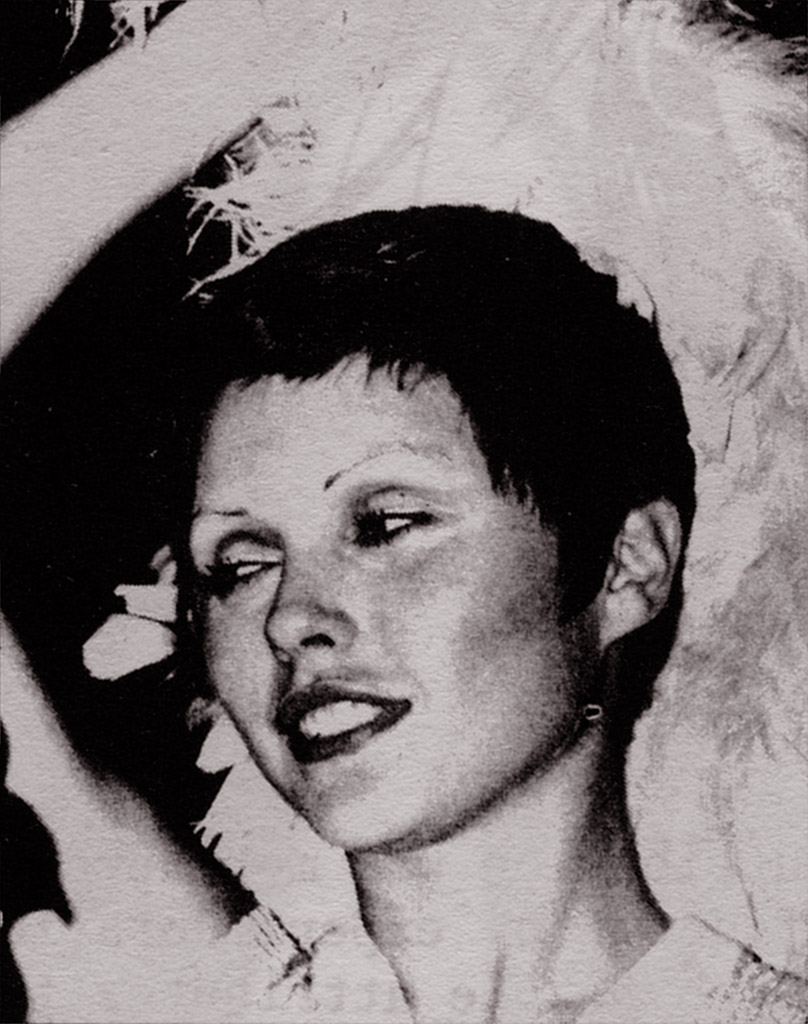
Elda tries to kick-start The Stillettoes again. A new third girl, Amanda Jones, is found. Drummer Billy O'Connor (following on straight from Tot/Thoth, and who the others already knew from The Bobern) and bassist Fred Smith are already on board. Debbie: We made friends with Elda again. She had found a third girl, Amanda Jones, whom everybody liked, so we started working with her. Amanda was great-looking. The whole act became more gaudy and tacky, and the press started coming around.
From May onwards, the band regularly plays CBGB (315 Bowery). They begin to get press coverage, including a brief review by Chris Charlesworth and photo in the prestigious UK music paper, Melody Maker, as part of a review of the New York scene. The band asks Charlesworth to manage them but he doesn't think he's the right man. Bearsville Records offer the girls, but not the boys, a contract; the band says no.
Elda: The second version of The Stillettoes was when we hit our stride. It was fun seeing it come together.
Songs being "done" at this stage are an eclectic mixture of originals and cover versions, and include: In The Flesh; Narcissma; Shirley Bassey's Goldfinger; Rip Her To Shreds; Platinum Blonde; Jean Knight's Mr Big Stuff; Rouge; Recipe; Compliments And Promises; Charlotte The Harlot; Thief In The Night; Hate Song; Pentagon; Frankie Valli and the Four Seasons' Bye Bye Baby; Dracula, What Did You Do To My Mother? (a song ported over from Pure Garbage) ... and Wednesday Panties:
Monday, pink Monday
Tuesday, bluuuuue
Thursday, Friday, Saturday, Sunday
Wednesday, what happened to you?
I left my Wednesday panties in Pasaic
Pasaic, New Jersey
During this period the band is also known to have played Club 82 (82 East 4th Street), Kenny's Castaways (211 East 84th Street), The Mushroom (22 East 13th Street), Whyte's Pub (where Debbie worked for a time, 80 Wall Street) and Bacchus Rock Palace (209 West 48th Street).
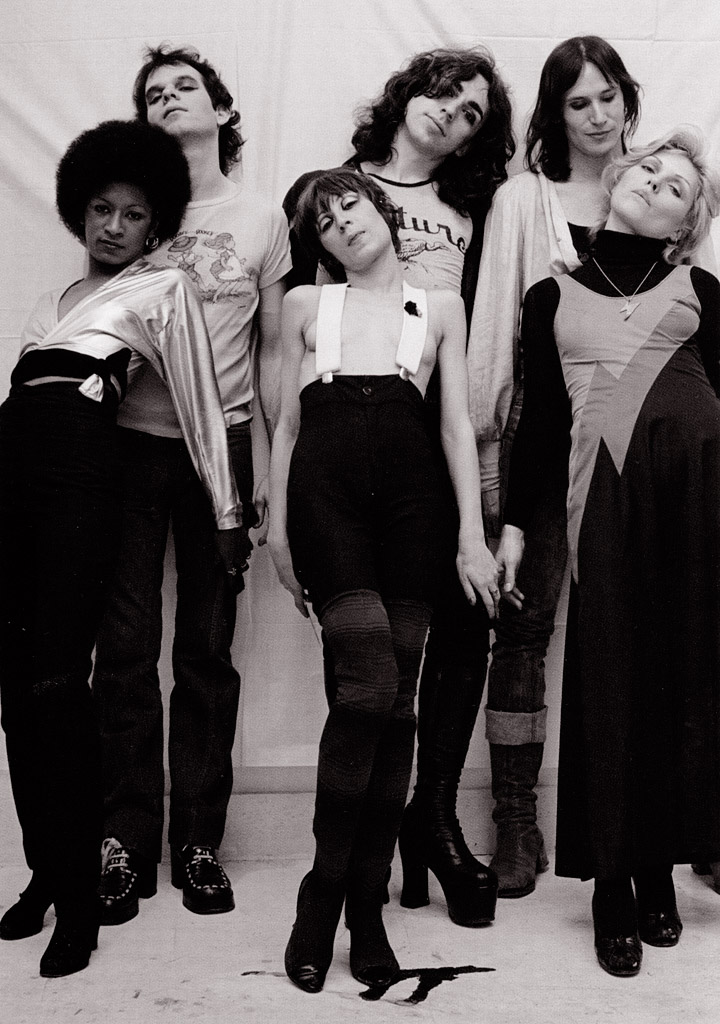
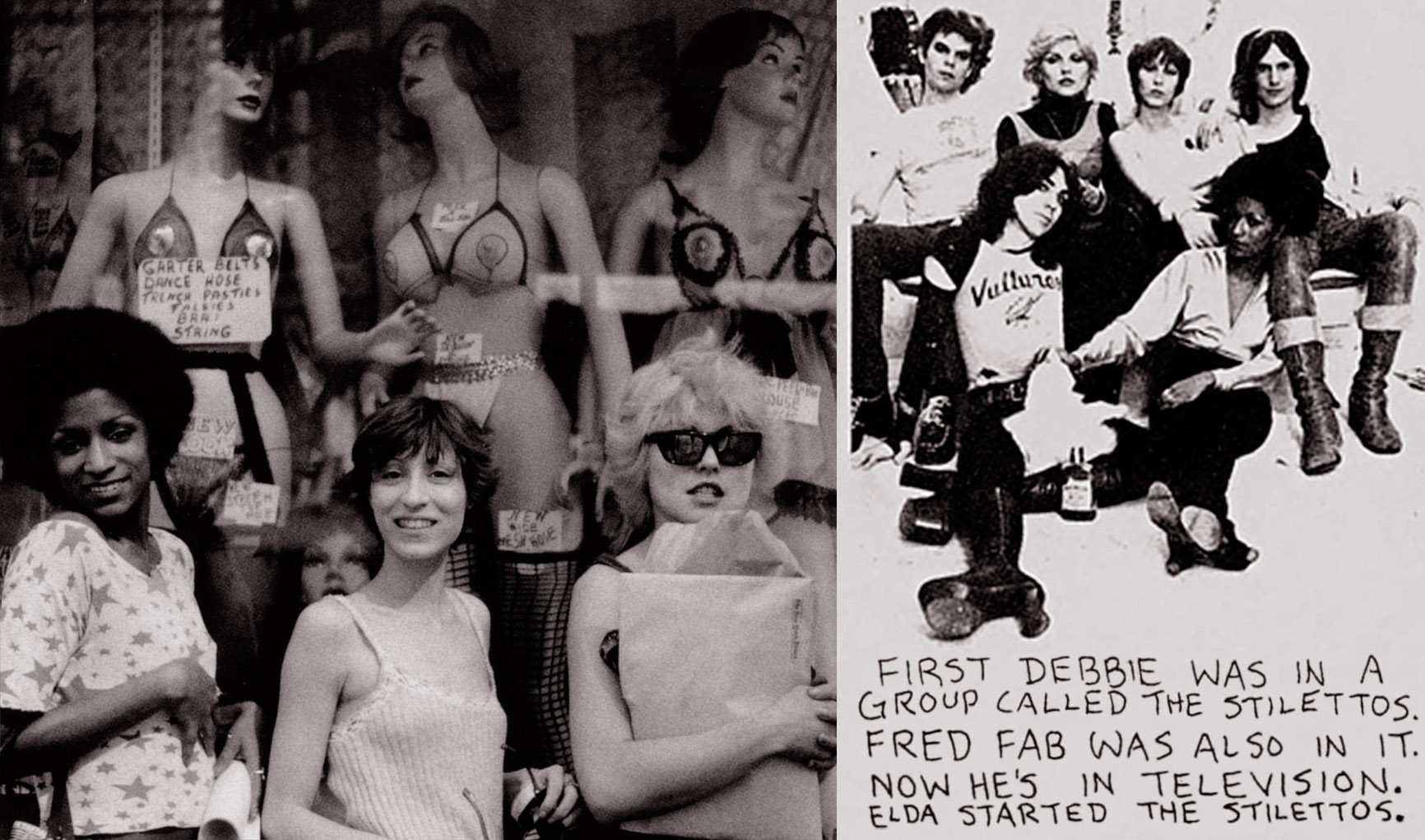
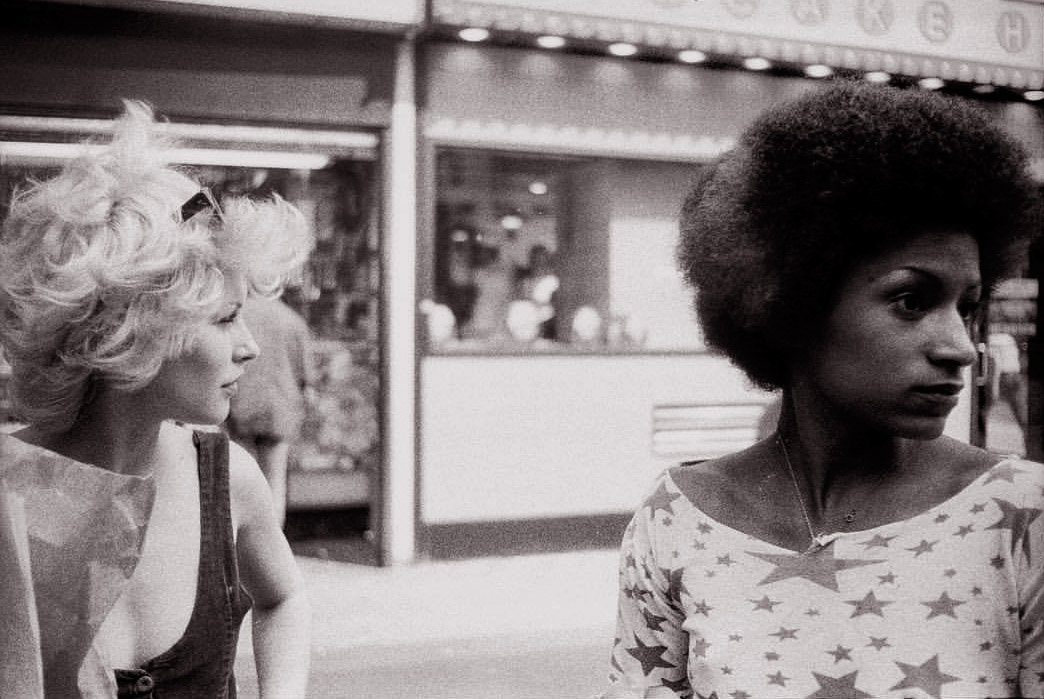
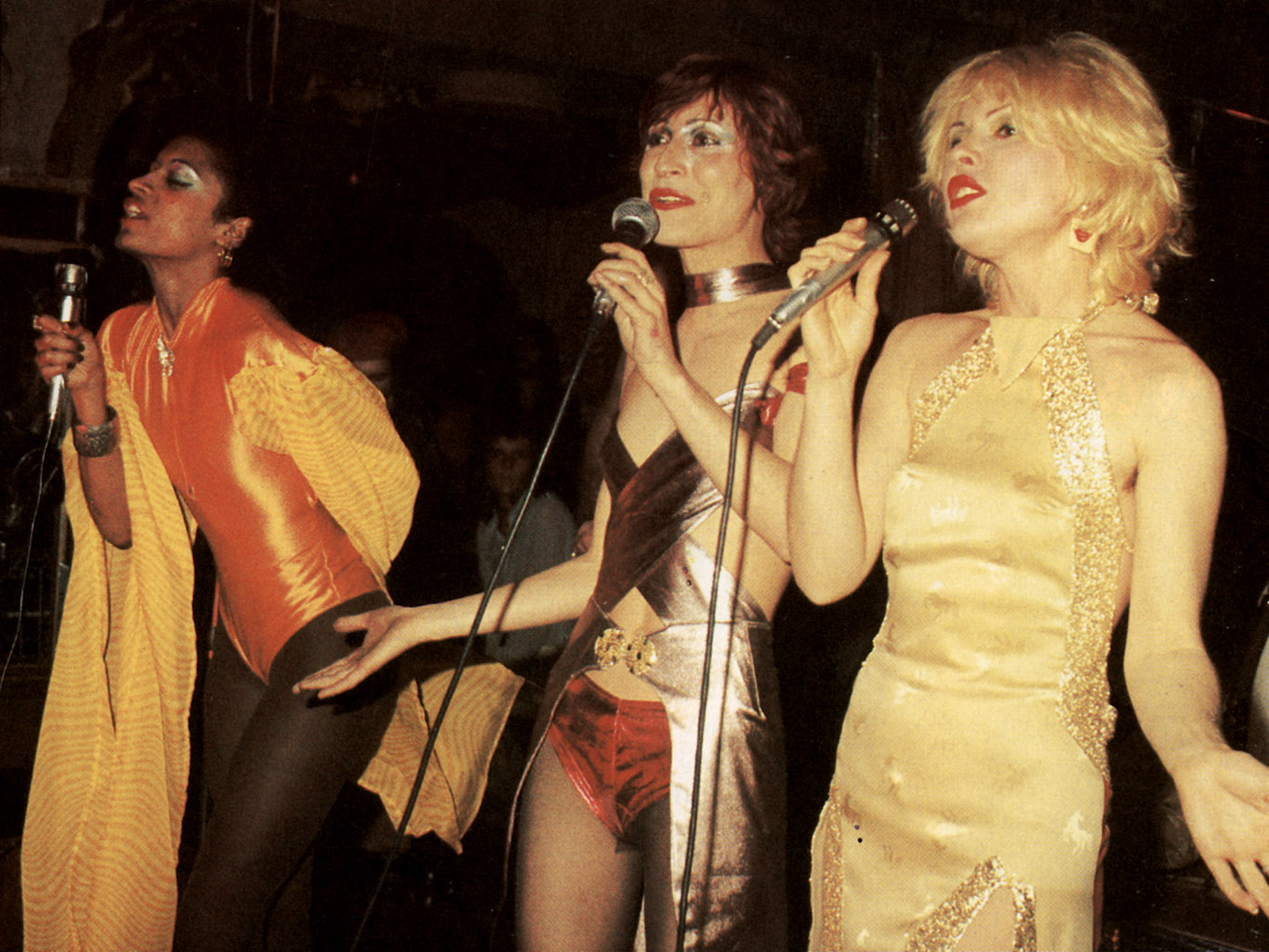
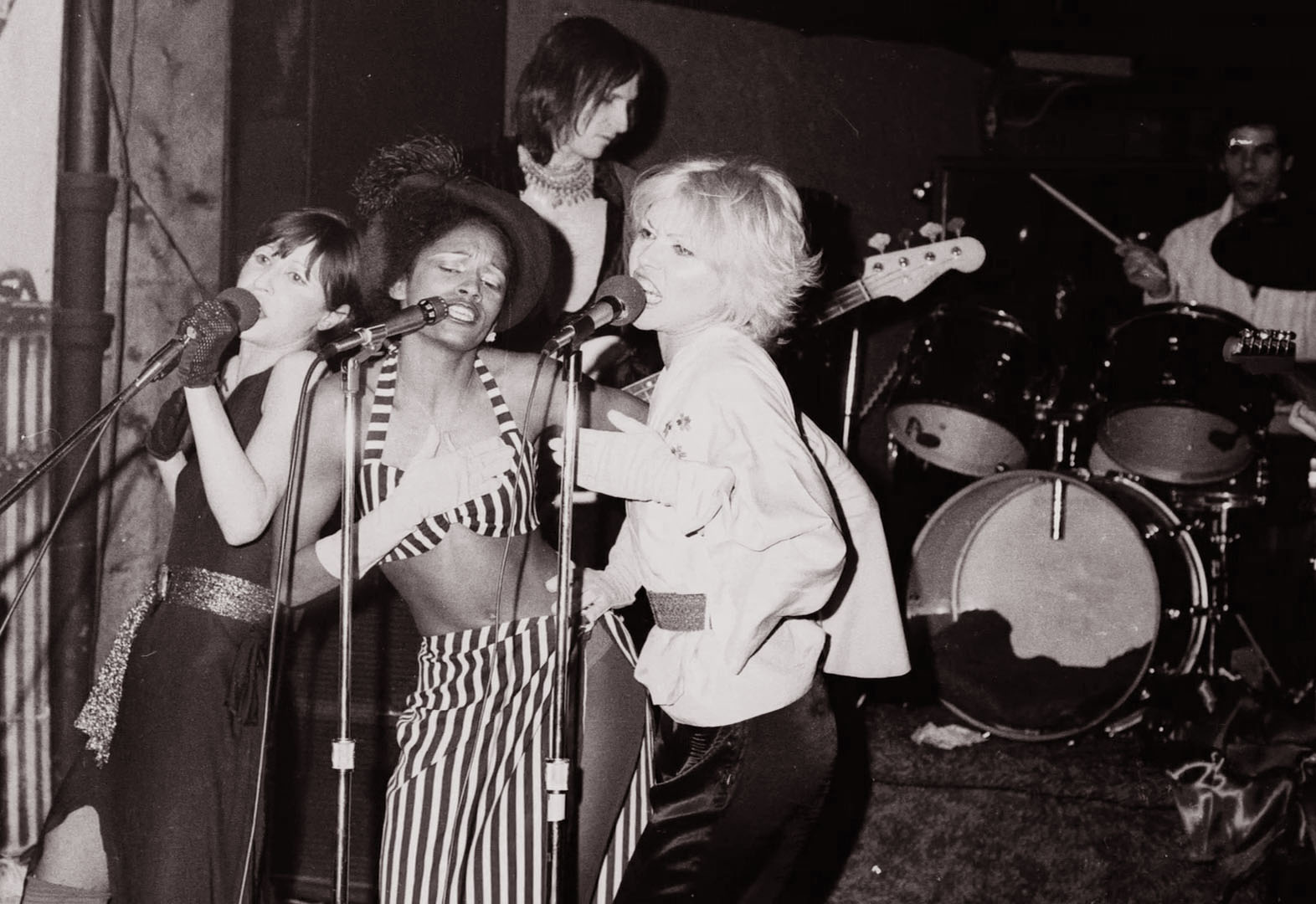
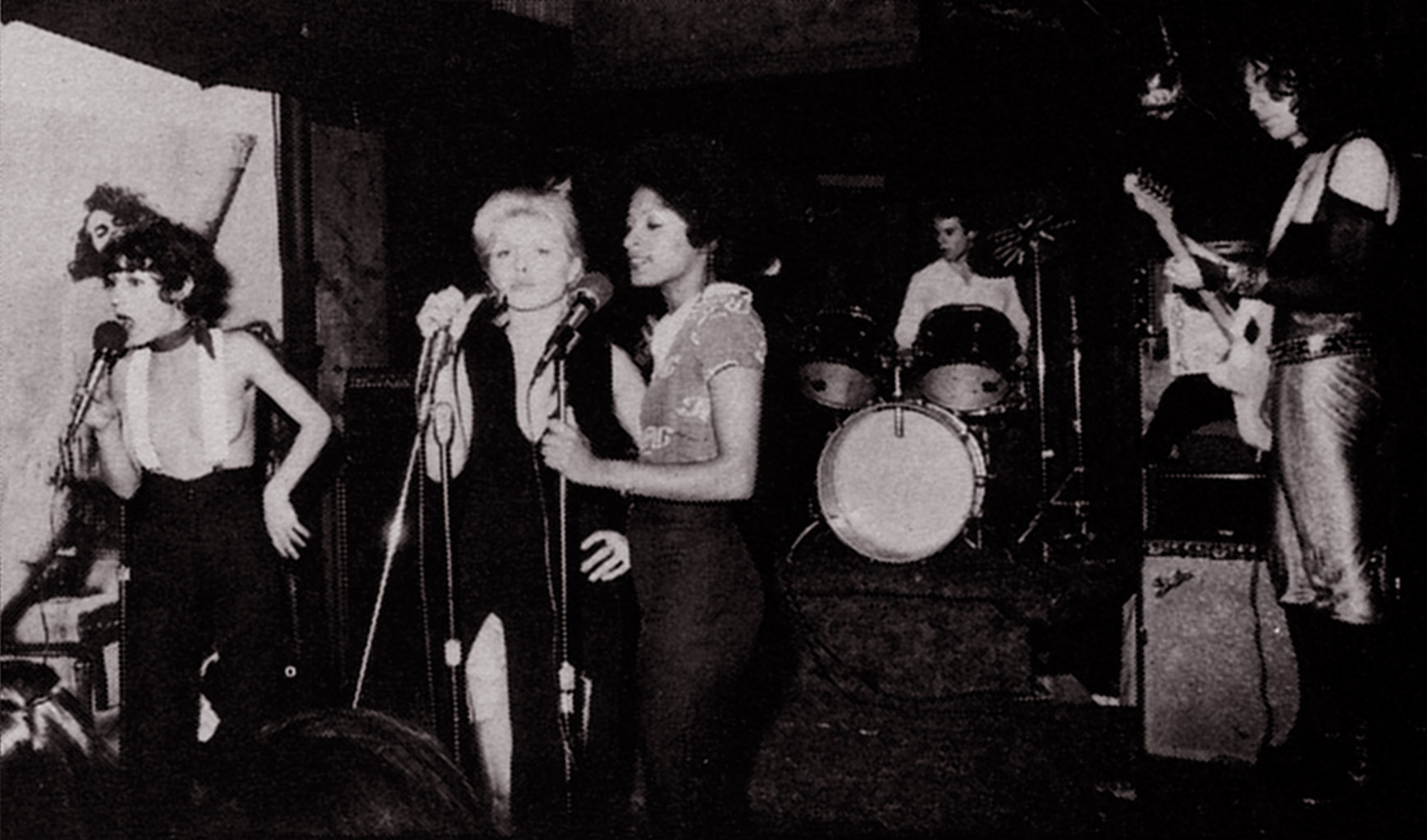
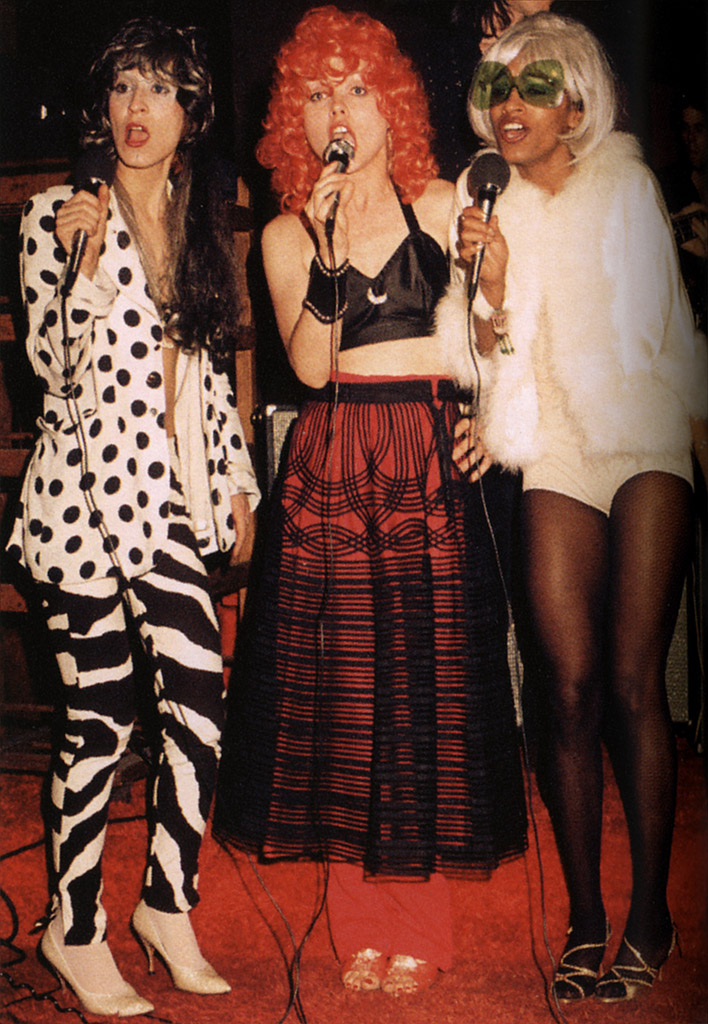
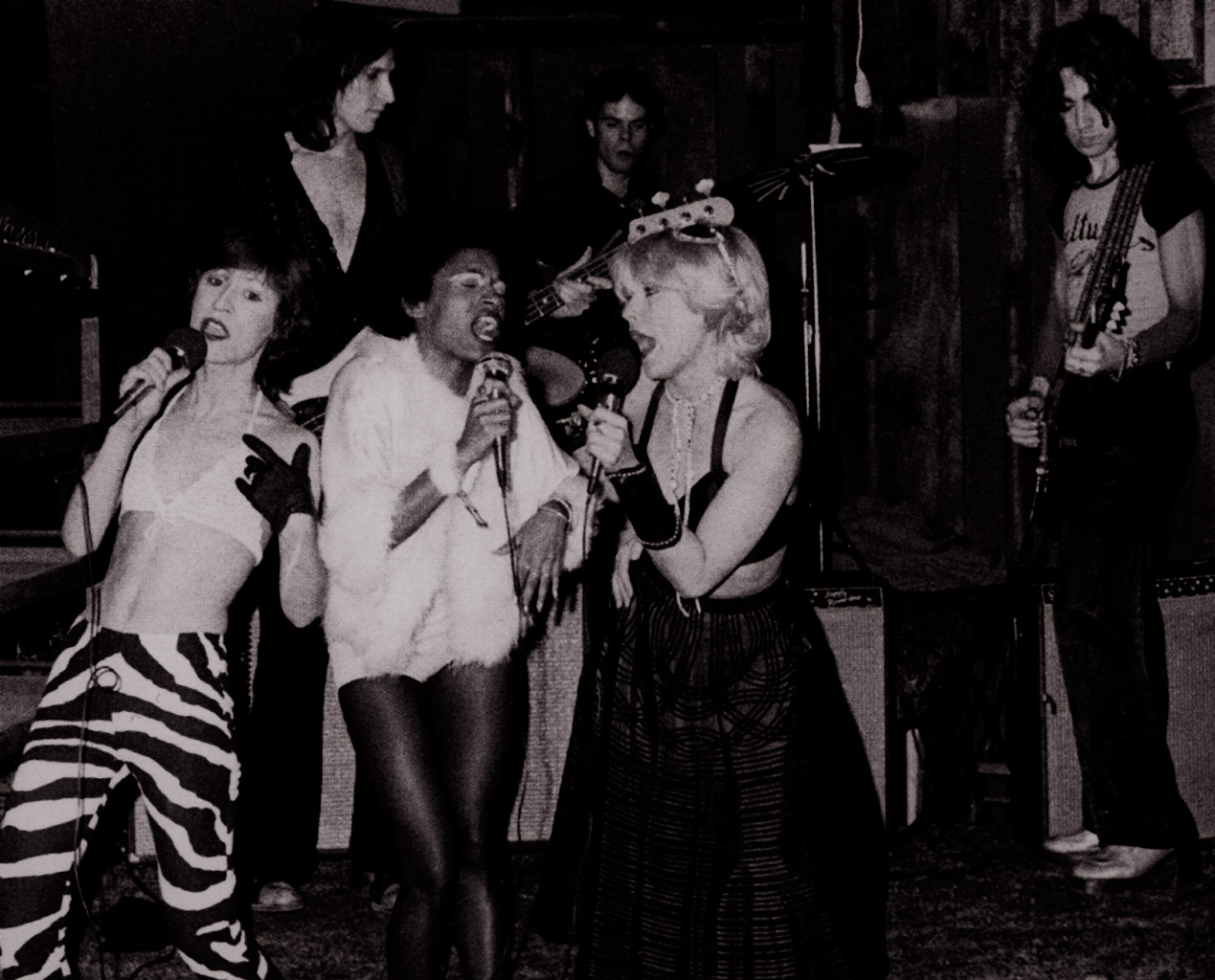
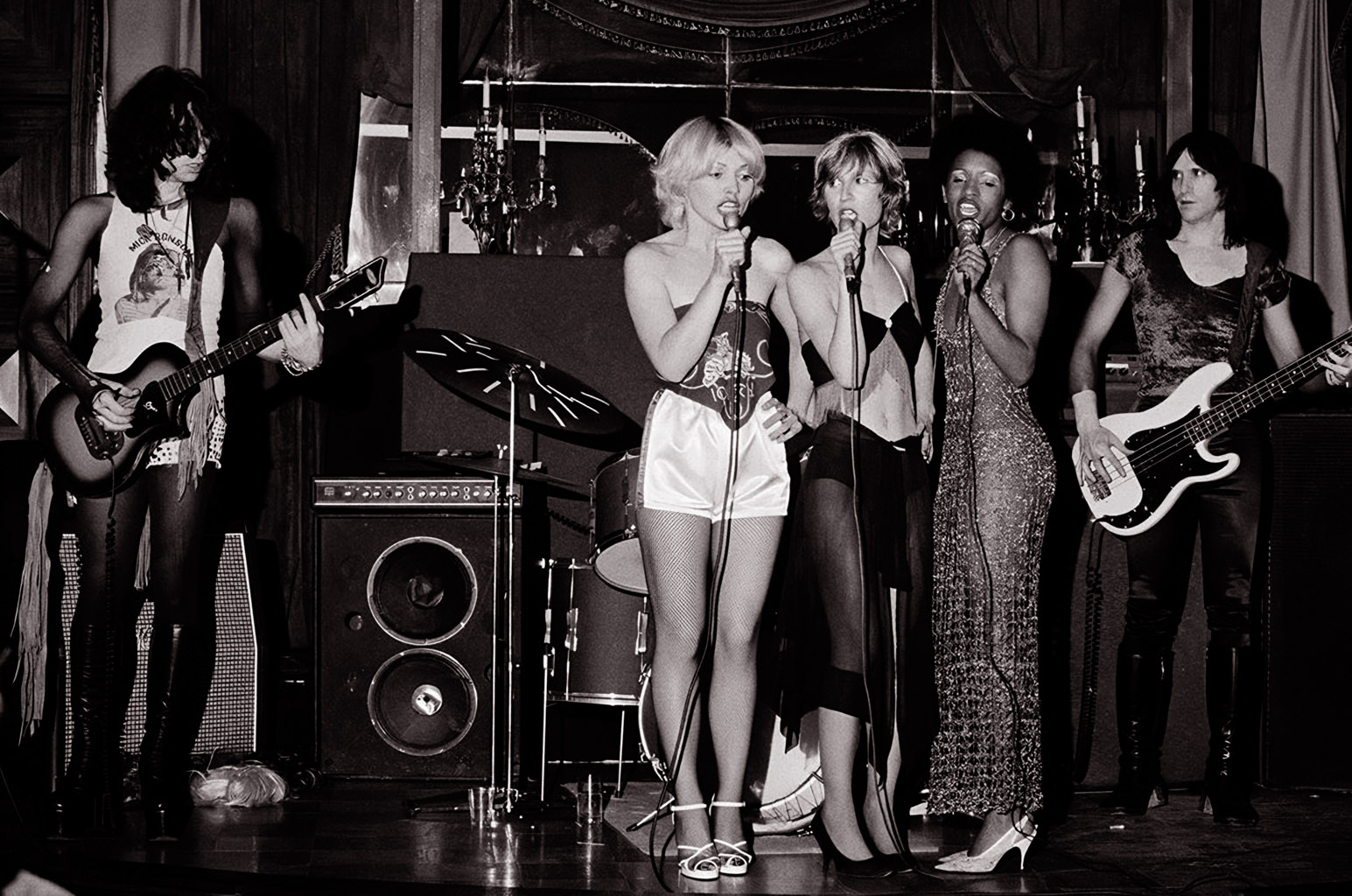
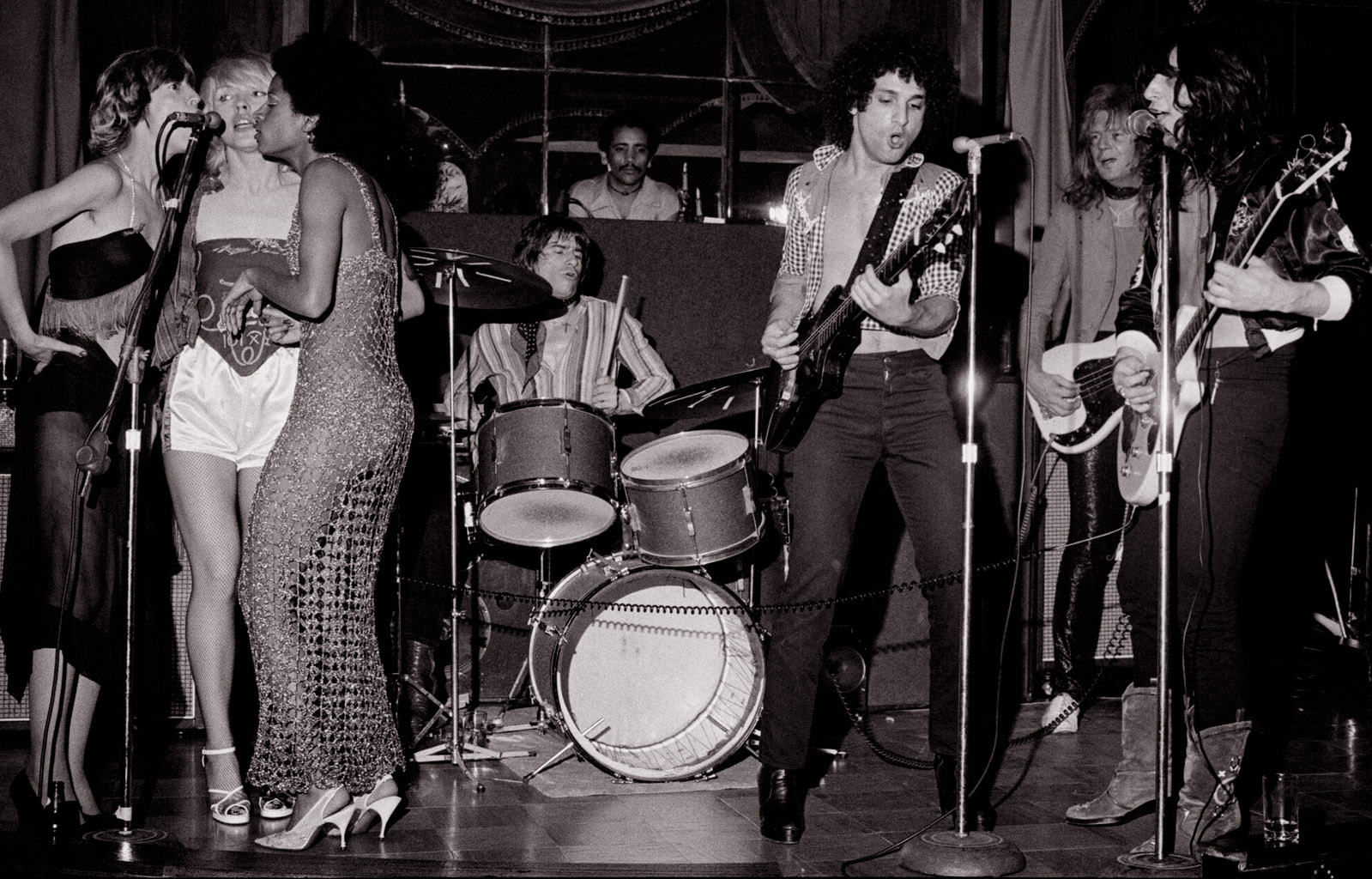
With Debbie now noticeably more to the fore than the other two girls, and after weeks of rumblings, The Stillettoes split. Debbie and Chris take the band (Fred Smith and Billy O'Connor) with them, leaving Elda and Amanda behind. Debbie: [I] decided that I wanted to do less shtick and more music. Elda, claiming she quit, counters: We were turning into a disco band! Debbie: Three girls trying to get along together is hard enough without worrying about whose ego is going to be on top. Elda wanted a certain person to manage us, and I didn't like the idea of someone saying, "[I am] your manager, sign this." I said I wanted to do my own thing again and I left. Chris: The trio situation was too small to contain all the styles and ambitions of three leads and the group went the route of other girl trios with one member emerging.
At CBGB on August 16 1974, Blondie play their first gig, billed as Angel and the Snake, alongside The Ramones. The band is: Debbie Harry (vocals), Chris Stein (guitar), Fred Smith (bass) and Billy O'Connor (drums). This early name for the band comes from a picture in Esquire of a model with untamed platinum-blonde hair and a snake wrapped round her torso. Chris: The girl in the picture looked vaguely like Debbie, had cheekbones.
Chris: We did a hodgepodge of stuff, a lot of things left over from The Stillettoes. It took us a lot longer to find our own identity than the other bands. Elda had had such a strong vision, a definite identity. We were finding our way more slowly.
A couple of months – and a couple of gigs – later and the band are now calling themselves Blondie. Debbie: When I walked down the street the construction guys and truck drivers would yell, "Hey, Blondie!" [And] there was a famous comic-strip character from the thirties named Blondie, a flapper – the dumb blonde who turns out to be smarter than the rest of them.
At this time, Ivan Král (who later goes on to work with the Patti Smith band) joins the band on guitar. He stays three months (Debbie: Ivan just got bored.) He appears to have been responsible for the earliest footage of Blondie known to exist and has posted to Youtube a very brief (and heavily watermarked) clip of him performing with the band.
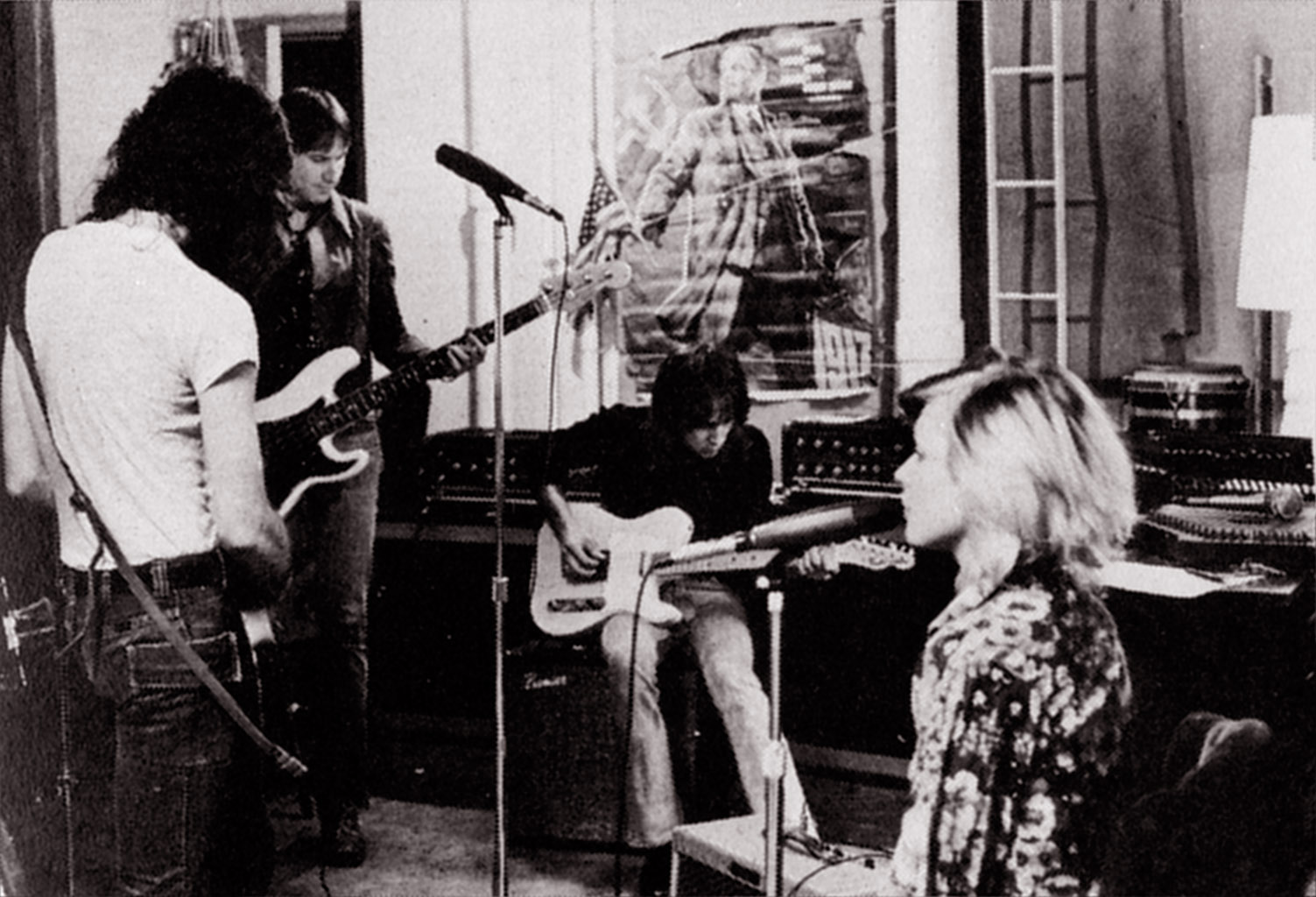
Perhaps indicating the group is having trouble leaving the three-girl image behind, they recruit two backing singers, Julie and Jackie (the latter of whom worked at Whyte's Pub alongside Debbie). Debbie: I remember it fit together really well, because all three of us were blondes. By mid-January at the latest, Jackie, who's proving unreliable, drops out and Julie leaves New York.
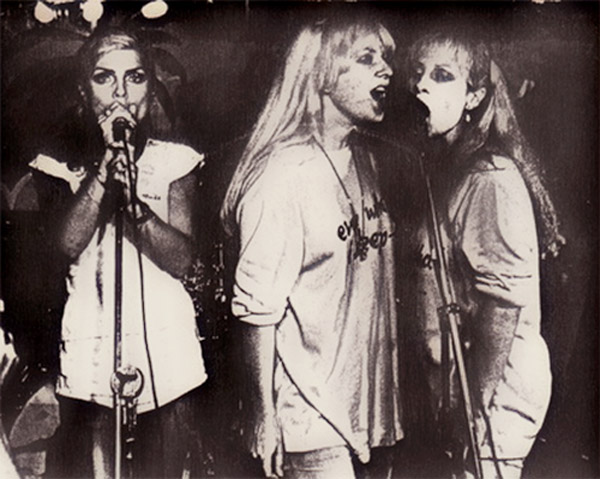
The band then recruits sisters Tish and Snooky Bellomo as the two new backing singers. The pair have previously appeared on the same bill as Blondie as The Savage Voodoo Nuns. With this line-up, the band dubs itself Blondie and the Banzai Babes. Debbie: Because they were sisters, their harmonies were terrific and I loved their hair and clothes, so I thought we could join forces. I remember one time [they] came in with three pairs of jodhpurs, these riding pants they found in a thrift shop in the Bronx, so we all wore those onstage. Other times we might be very glam with long dresses, stilettos and fur stoles. There were all sorts of costume changes and props.
Tish: It was usually Debbie on one side and me and Snooky on the other side. She'd be doing whatever she does, and we'd be dancing and choreographed. We even used to break into a tap dance in the middle of one song. It seemed like the whole time we were in the band they didn't have any idea what they were doing. One week we were a Top Forty band, the next week something else. Debbie: We were a dance band but, to tell the truth, we were so bad that to call us a garage band ... to call us a band, was a great compliment. A review in Variety reports: The okay choreography proves more prominent than the vocals. Blondie's singing is good but not properly showcased.
The band also makes what is believed to be their first studio recordings, backed up by Tish and Snooky and, proving there were no hard feelings for nicking her band, Elda Gentile. They record a cover of The Shangri-Las' Out In The Streets; a cover of Tina Turner's Sexy Ida; and The Disco Song (an early version of, and the first of many attempts at, Heart Of Glass). Chris: In the summer of 1974, I wrote a song and referenced the catchy feel of Rock The Boat by The Hues Corporation, which was a big hit then. We tried a calypso beat, a funk approach, and others. Nothing ever seemed to work comfortably. The recordings are produced by Eric Emerson and recorded at The Performance Studios (23rd East 20th Street, a combined rehearsal space and live venue).
Meanwhile, live, the band are doing the Beach Boys' Fun Fun Fun and Labelle's Lady Marmalade and their own Man Overboard, Funky Anus, Little Girl Lies and Giant Bats From Space (later renamed Attack Of The Giant Ants). Venues include Brandy's II (1584 York Avenue) and at this time the group begins a long stint – pretty much a weekend residency – at CBGB which would last, on and off, until mid-1976.
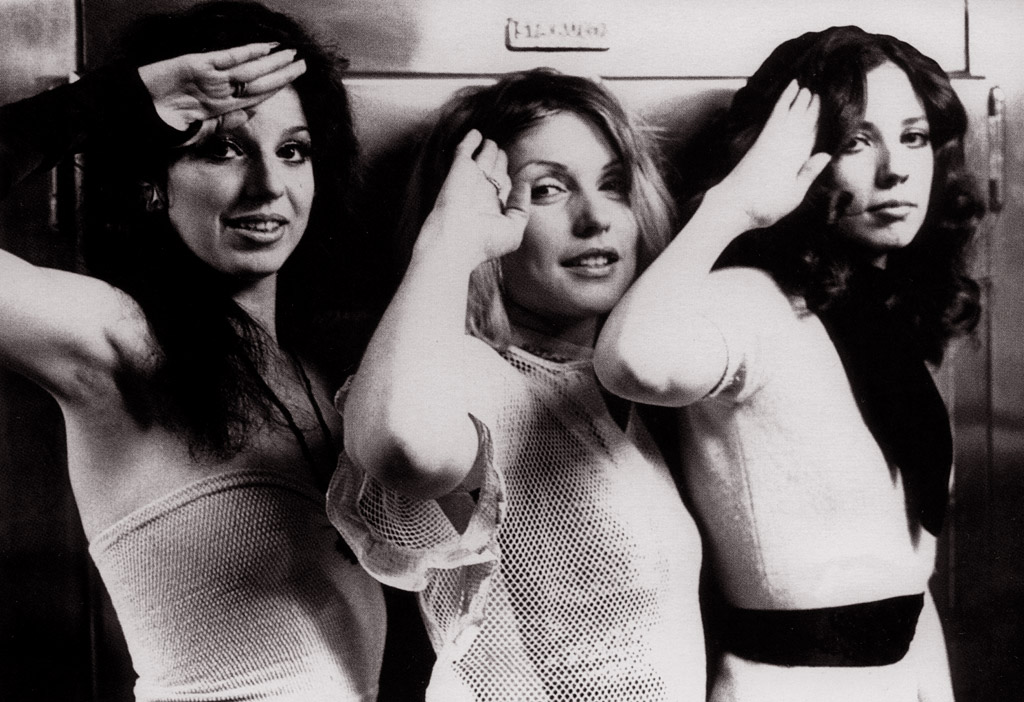
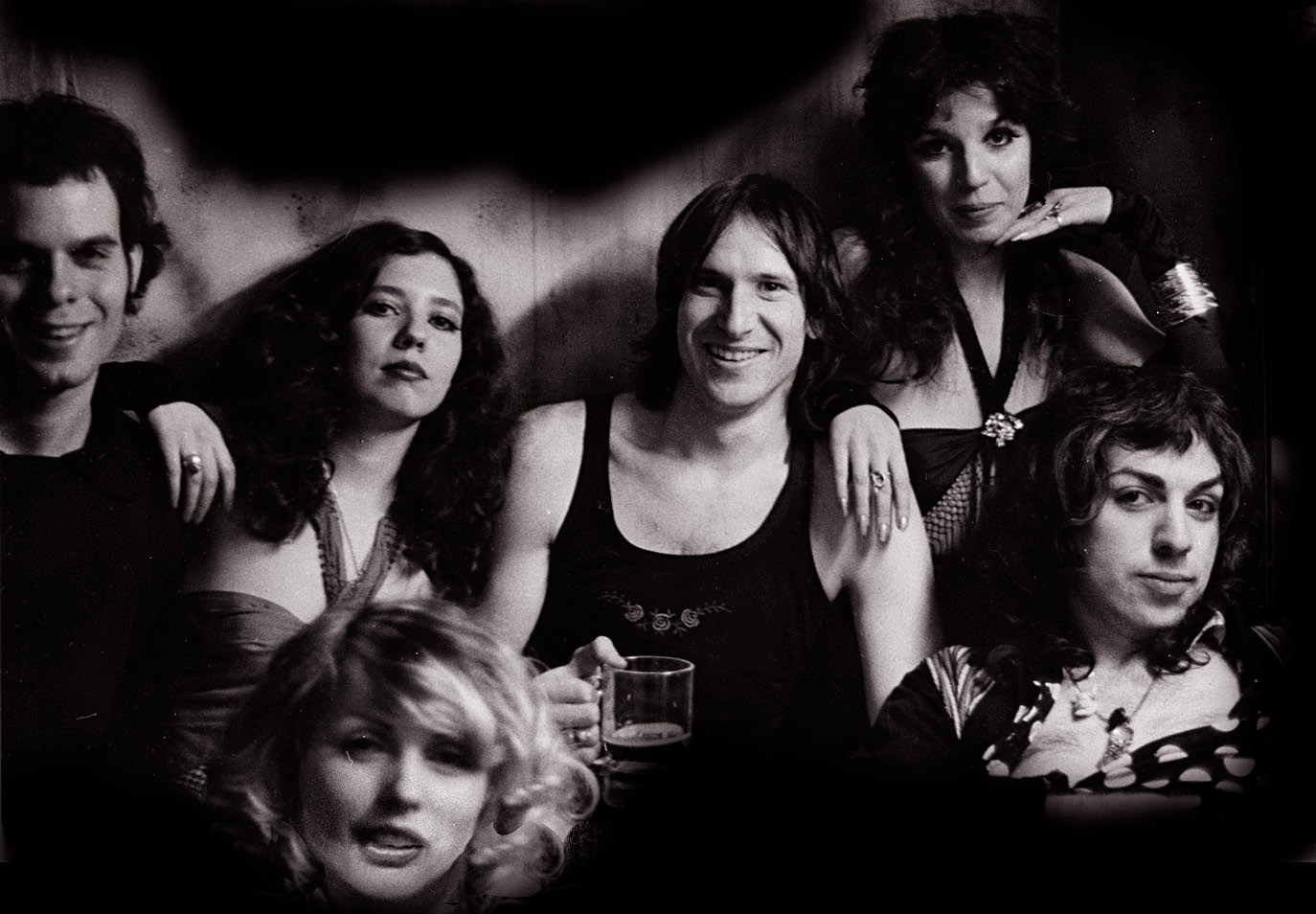
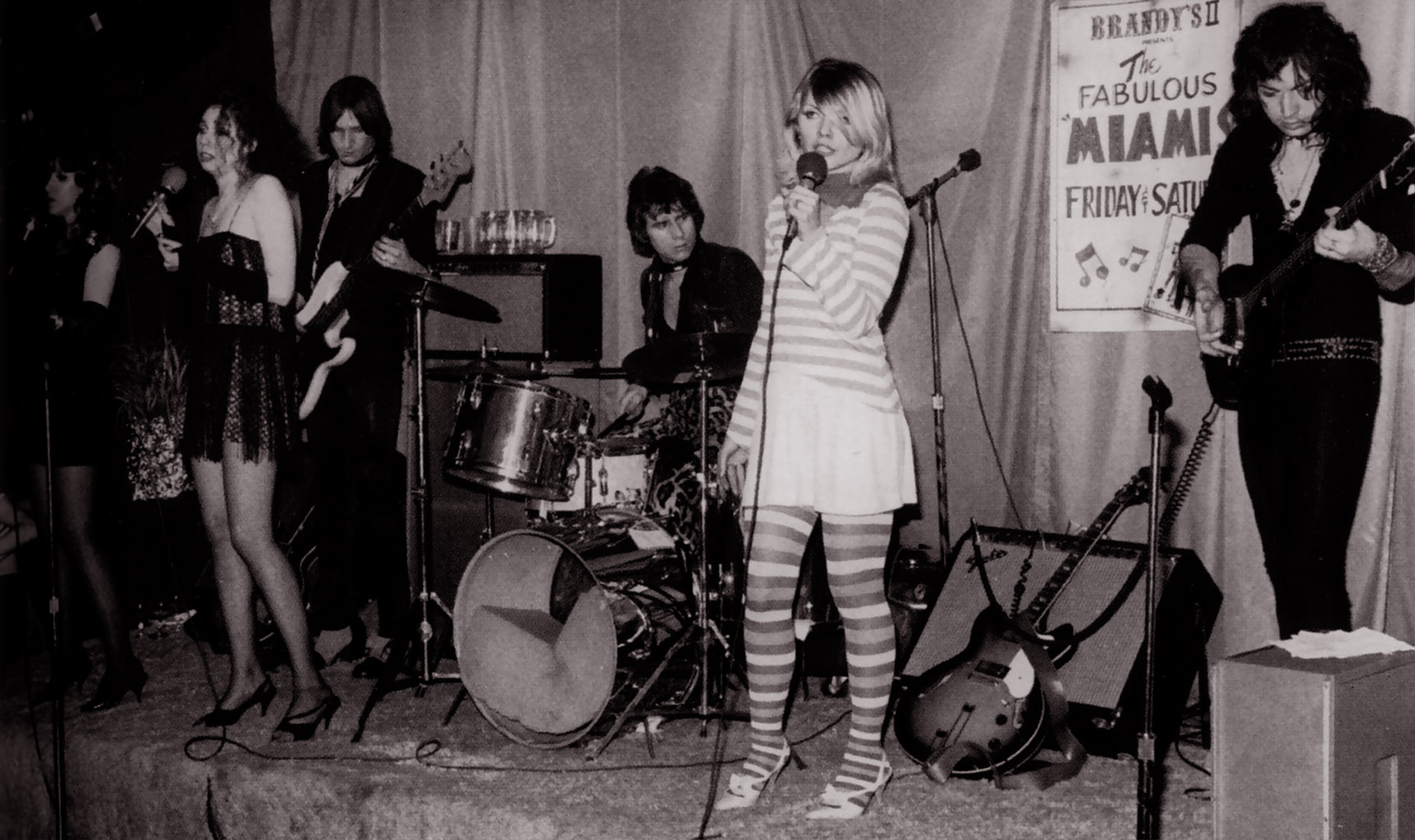
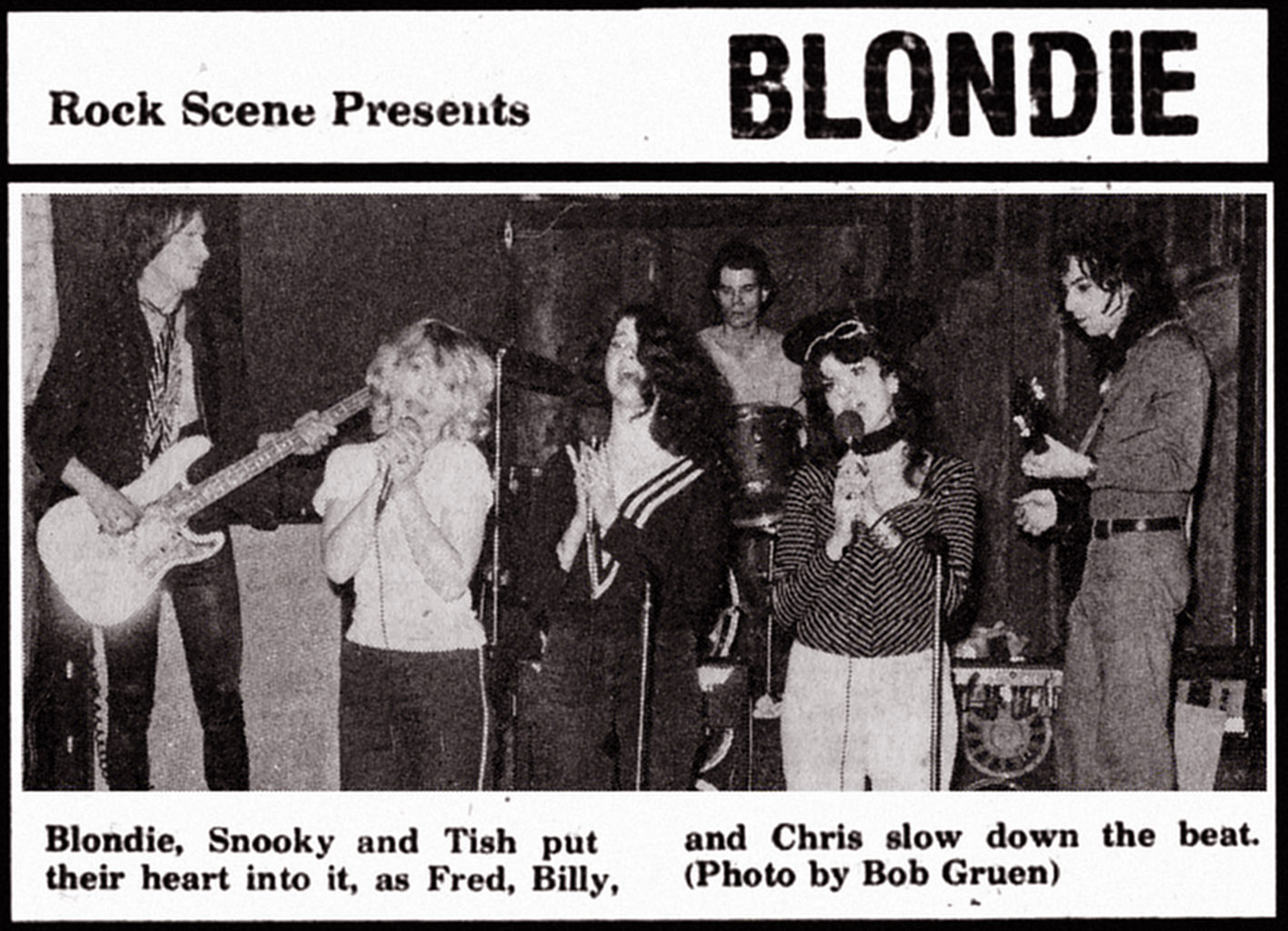
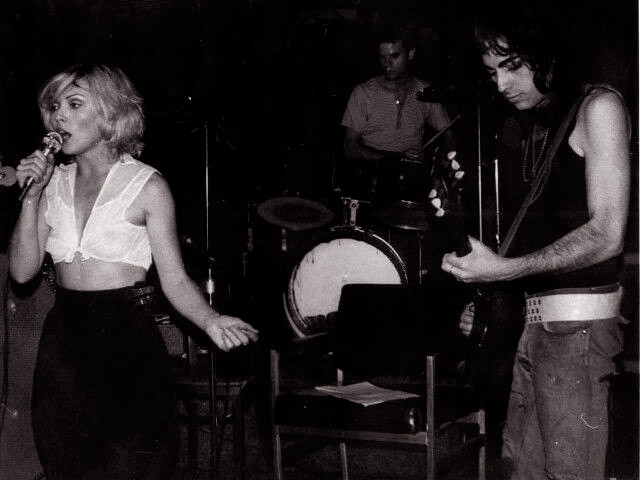

Blondie's drummer, Billy O'Connor, decides to quit the group and follow a career in medical law. Tish: There's always a scapegoat in groups. Billy O'Connor was always getting blamed for everything that went wrong. Fred [Smith, on bass] said to him, "You should quit this band because they're gonna kick you out anyway and you should leave before they do that to you." Fred: [O'Connor] kept passing out, he'd just collapse. Debbie: His family wanted him to stay in med. school. Like so many teenagers, he wanted to taste freedom, break out, and bang hard for a bigger life. He was conflicted, and the drinking and the pill-popping overcame him.

In mid-March the band places an advert in Village Voice advertising for a new drummer. Around forty people respond. The last applicant is Clem Burke (ex New Jersey-based Sweet Revenge). Debbie: He was very experienced. He'd been in bands since he was about fourteen years old or something. He was famous in New Jersey and the surround towns where he played. Clem was definitely what we were looking for. Keith Moon, the biggest influence on his playing, style and outlook, fitted right in with the rock greats Chris and I emulated. Chris: He actually knew who we were, had been to a Stillettoes show at the 82 Club. He had great hair and a cool pair of boots on, so that was it, an easy decision.
Clem: My whole thing was that I wanted to find my Marc Bolan, or my David Bowie or Mick Jagger. I wanted to find somebody with that much potential. They had interesting songs and they were doing original music, and I wanted to play original music. I wasn't very much interested in being a club band.
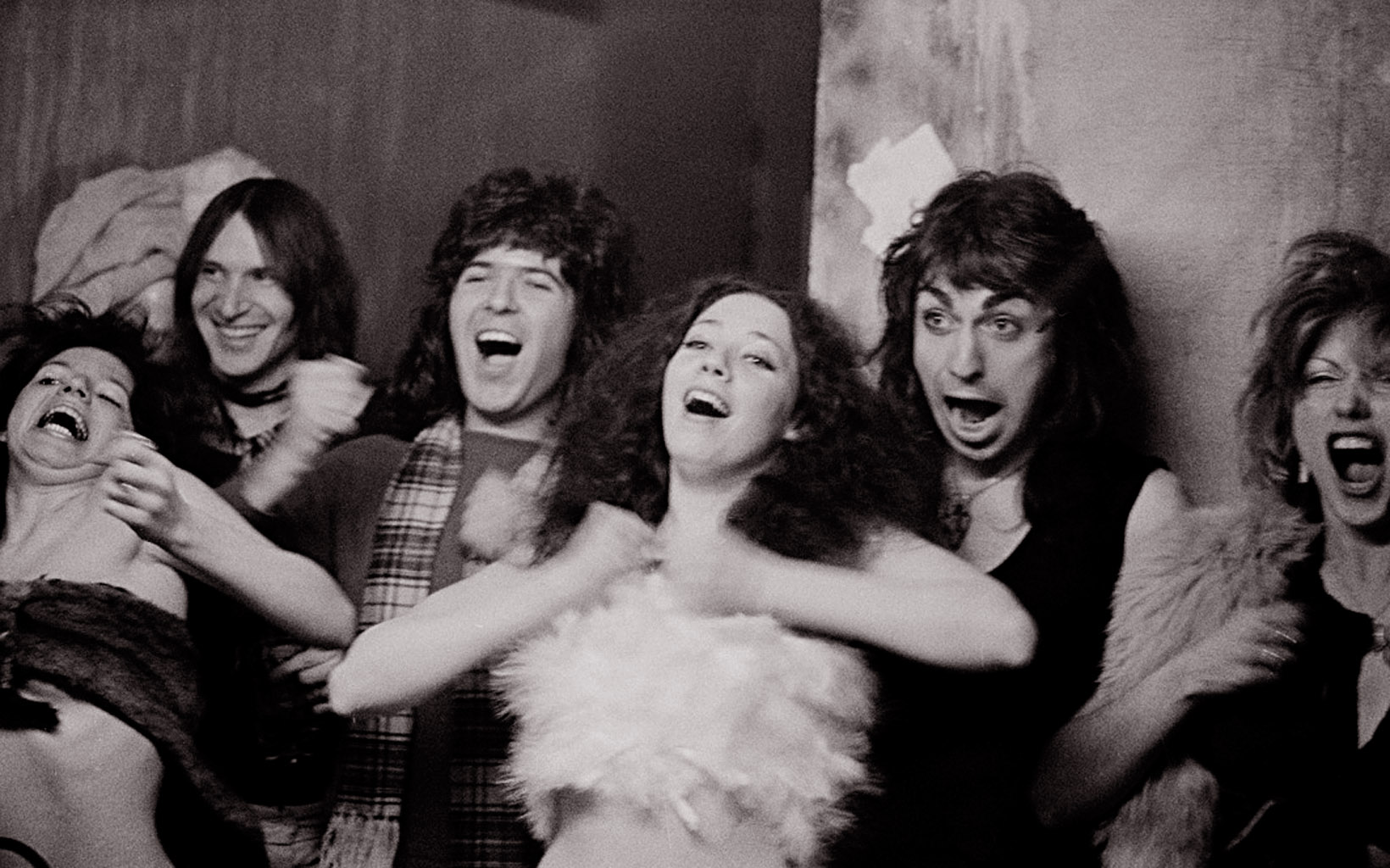
However, the band's line-up changes are not yet done with. On April 7, during Clem's first gig with the band, Fred Smith announces he too is leaving and has auditioned for both The Patti Smith Group and Television (which Patti Smith's boyfriend, Tom Verlaine, fronts). Debbie: I had an intuition with Fred. He was really unhappy at the beginning of the month. But during the break between the sets, Fred had told Chris he was quitting to join Television. We had played a long time with Fred. We were struck dumb by the whole thing, by the whole movement against us. I may be paranoid, but I think that whole clique wanted to destroy us. Chris: Patti helped coerce [Fred] away from us, helped take Fred over to the other side. (Much later, Smith sits in with Blondie one last time, at the CBGB benefit for Punk magazine on May 4 and 5 1977.)
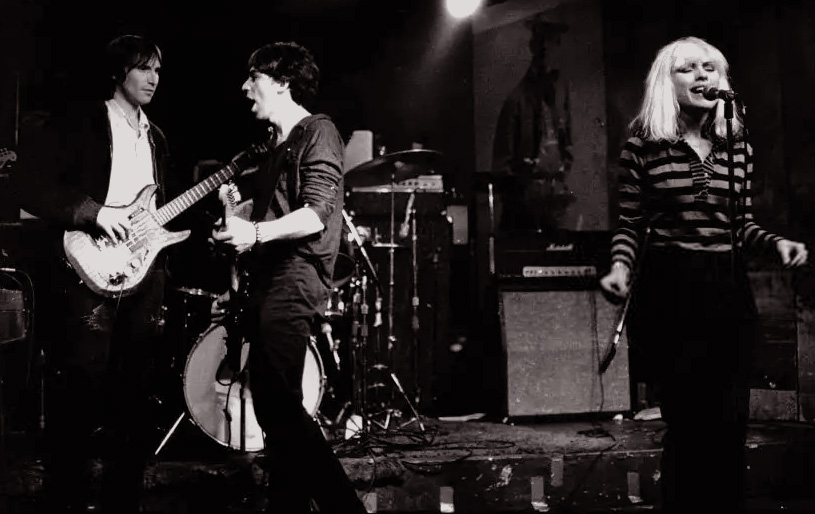
Debbie: [We] stayed depressed for a month. We threw our hands up and said, "What's the use?" Losing hurts. So we didn't do anything for a month. Finally Clem called up asking, "Are you going to do something or not? I think you should at least try." Clem kept telling us we were good, that we had something. I never asked what "something" was, but he got us rehearsing again and began to bring a bunch of his friends from Bayonne around.
Clem introduces one of these friends, Gary Valentine (né Gary Lachman), to Chris and Debbie. Gary: "Well they're pretty campy," Clem said. "Debbie, the singer, is great. Really sexy, and her voice is terrific. The guitarist's a kind of nut, though. He has really weird ideas of how to play. The music's sort of like what the Shangri-Las would have been like if they were drag queens."
Gary: After hanging around at a couple of gigs, they knew who I was. Clem said I was a poet and that I wrote songs, and I guess I looked the part. I was thin. I wore dark glasses. The fact that I couldn't really play the bass was a minor detail. Clem: He wasn't really a bass player at all. He was a poet and could play piano a little. I brought him to meet Chris and Debbie, and he played one of his songs on the piano and was in the band. Then he quickly learned bass. He makes his live debut with the band at a bar called Monty Python's (12th Street and 3rd Avenue). Gary: My first show with them came up pretty quickly. I don't remember much about it now, except that it was the one and only time that I felt stage fright and, like Stu Sutcliffe from the early Beatles, played with my back to the audience.
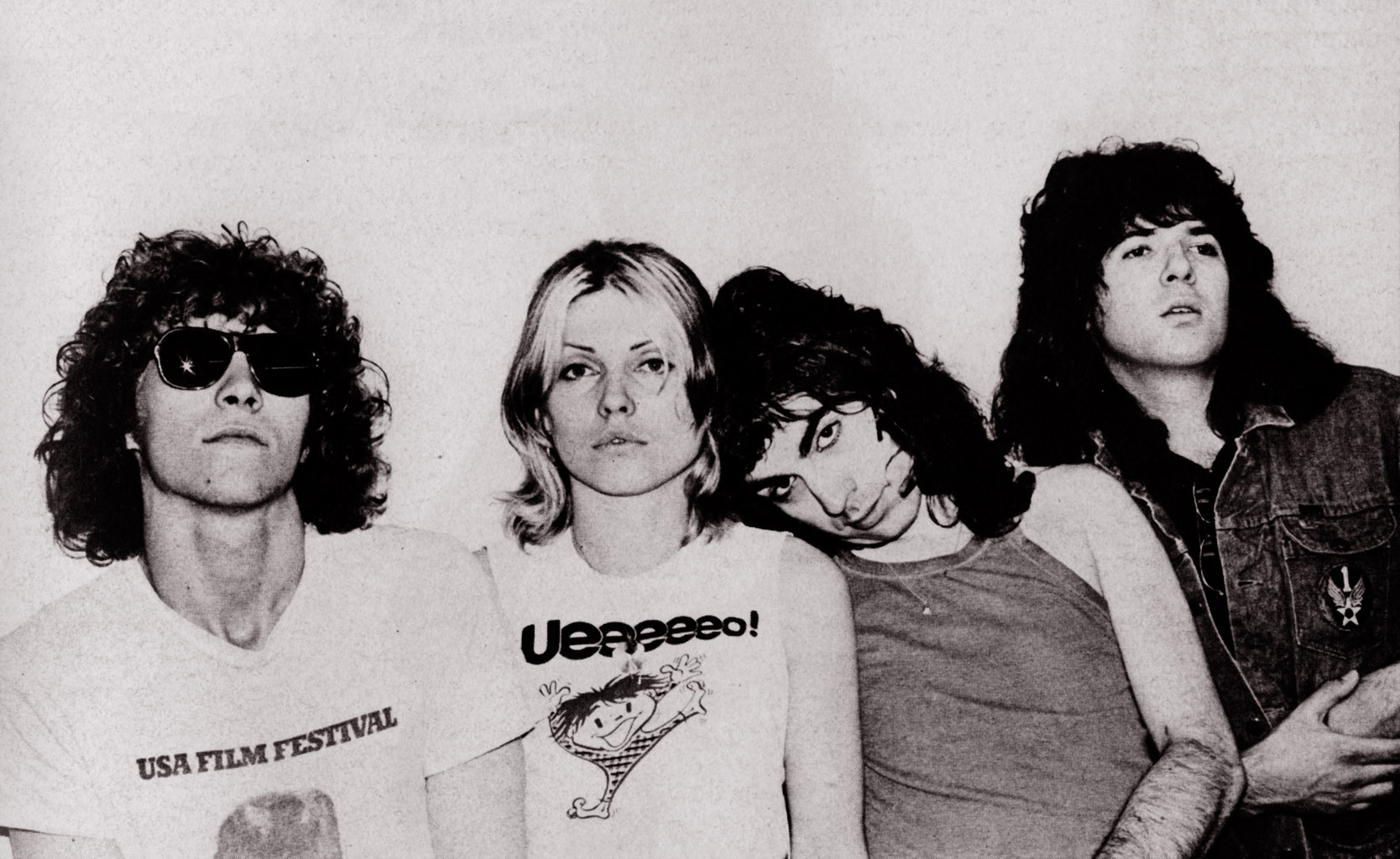
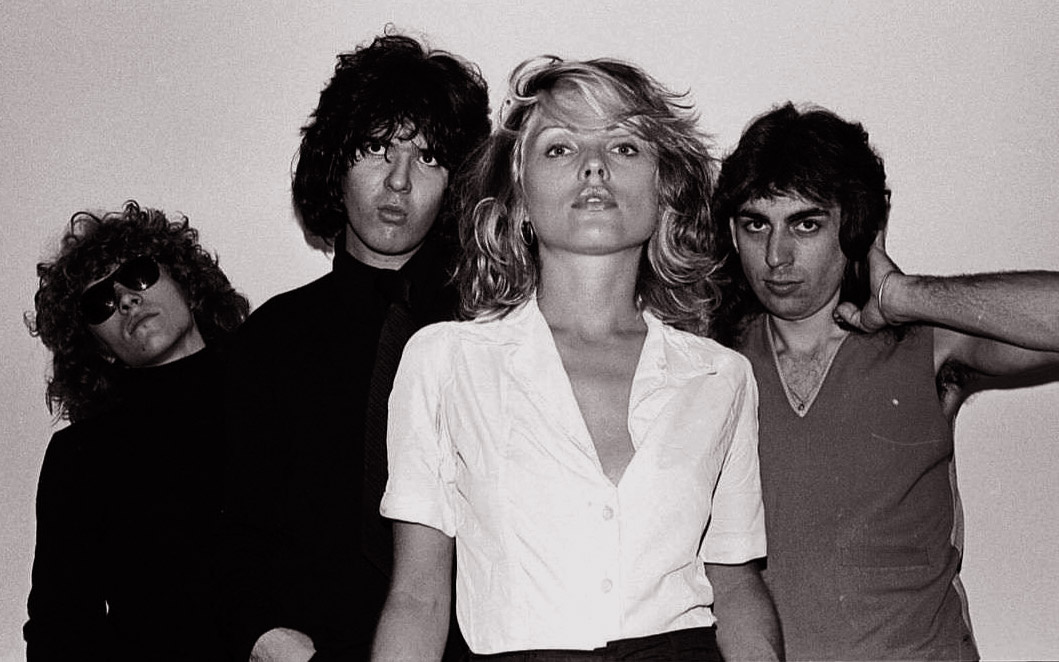
Gary is in, but Tish and Snooky are out. Tish: Two weeks went by without hearing from them, so I called her [Debbie] and said, "What's going on with the group?" and she said, "Oh ... I guess there is no group." And then I ran into Chris at Max's and he said, "We're playing at such-and-such a place on such-and-such a night, are you gonna be there?" And I said, "I thought there was no group?" Snooky: I was really hurt. We were friends too, we used to go shopping and everything together. I'd call her up and ask if she wanted to do something and she broke off the friendship as well as the business relationship.
Debbie: It had been easier singing in The Stillettoes and with the Banzai Babes where I could submerge my personality with the other girls' and didn't have to work so hard. On my own I had to put out more than ever.
Debbie uses a few stage props during this time, including a goldfish in a bowl known as "Mr Jaws" (Debbie: He died one night when Chris forgot to leave his night light on.)
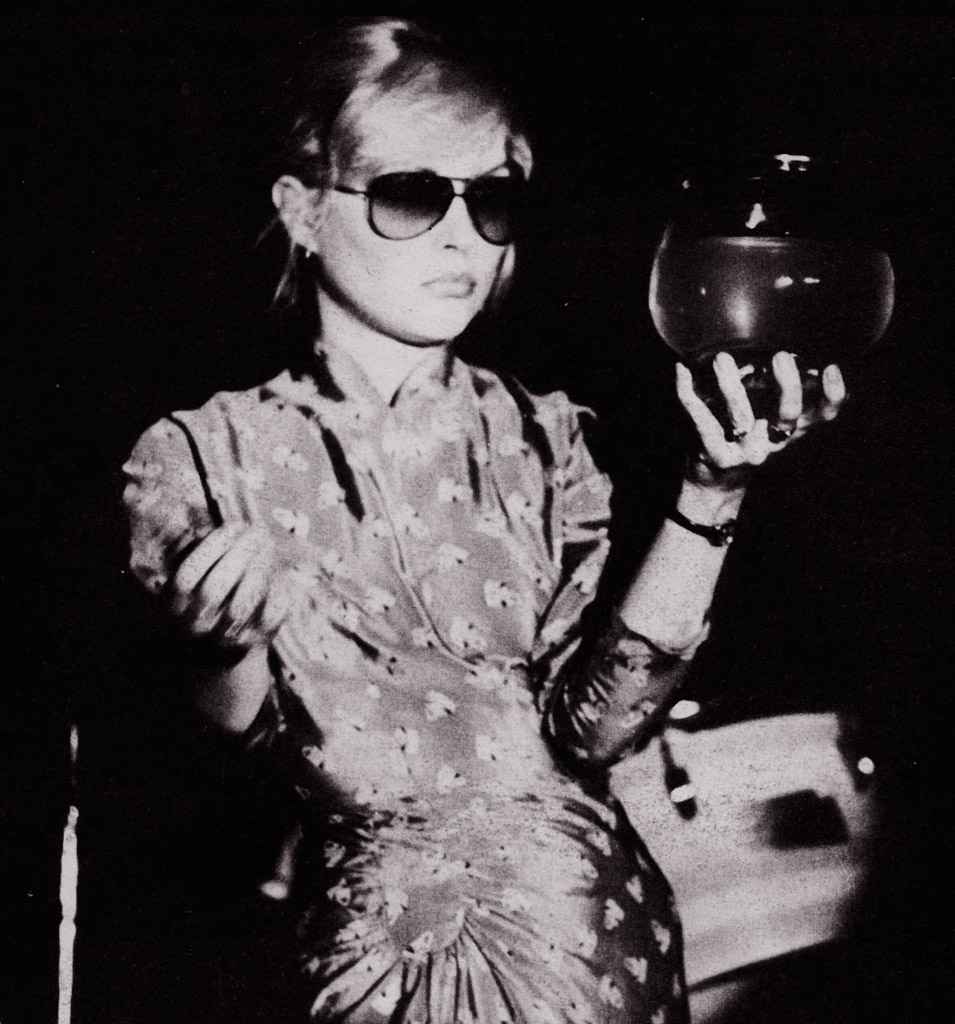
Debbie and Chris get roles as extras in a low-budget cop movie, Deadly Hero, directed by Ivan Nagy and starring Don Murray, Diahn Williams, Treat Williams and James Earl Jones. The pair appear in three brief segments as part of a "rock-enhanced orchestra" with Chris playing guitar as Debbie grooves along, while elsewhere on the stage a bunch of topless people (both sexes) in dayglo wigs do a dance. The first segment features a pan across the act's dressing room revealing Debbie and another girl making out!
Blondie enter the studio for four days in June (13, 16, 20 and 22) to record a five-track demo, consisting of: Out In The Streets; another go at Once I Had A Love (aka The Disco Song); two tracks penned by Debbie, Platinum Blondie (the first song Debbie ever wrote) and Puerto Rico; and a Stein/Harry number, The Thin Line. The recordings are produced by Alan Betrock, a music writer with the SoHo Weekly News: I decided I wanted to work with the band in some kind of managerial capacity. I brought a couple of people to see 'em and I was really hurt and upset because they just couldn't play live, they'd stop in the middle of a song and start over again, the amps would go out, strings would break and they wouldn't have extra ones. I decided that the thing to do for them was just to make a tape and not bring people down to see them! Nobody can now remember the name or location of the studio. Debbie: Somehow or other we wound up in Queens, recording a demo in the basement of a house belonging to the parents of a friend of Alan's. Gary: [It was] a studio out on Long Island, someone's garage, basically. Chris: The sessions were engineered by Kevin Kelly, the guy whose basement it was. Debbie: It was so hot and humid that we couldn't keep anything in tune. It was like being underwater.
It is commented that the demo seems more about showcasing Debbie's voice than the band's sound; unusually, none of the songs go forward to the band's first album. The demo is later (mid 1979) issued on bootleg EPs (minus Once I Had A Love/Heart Of Glass, by then a major hit in a very different version and presumably considered "too hot to handle") in both the US and UK once the band is internationally famous (Debbie: He [Betrock] put it out on an independent label and we were surprised he released these early versions without telling us, but it was cool). The tracks eventually see official release on The Platinum Collection in 1994. Slightly different mixes of Streets, Platinum and Thin appear on the 2001 album remasters.
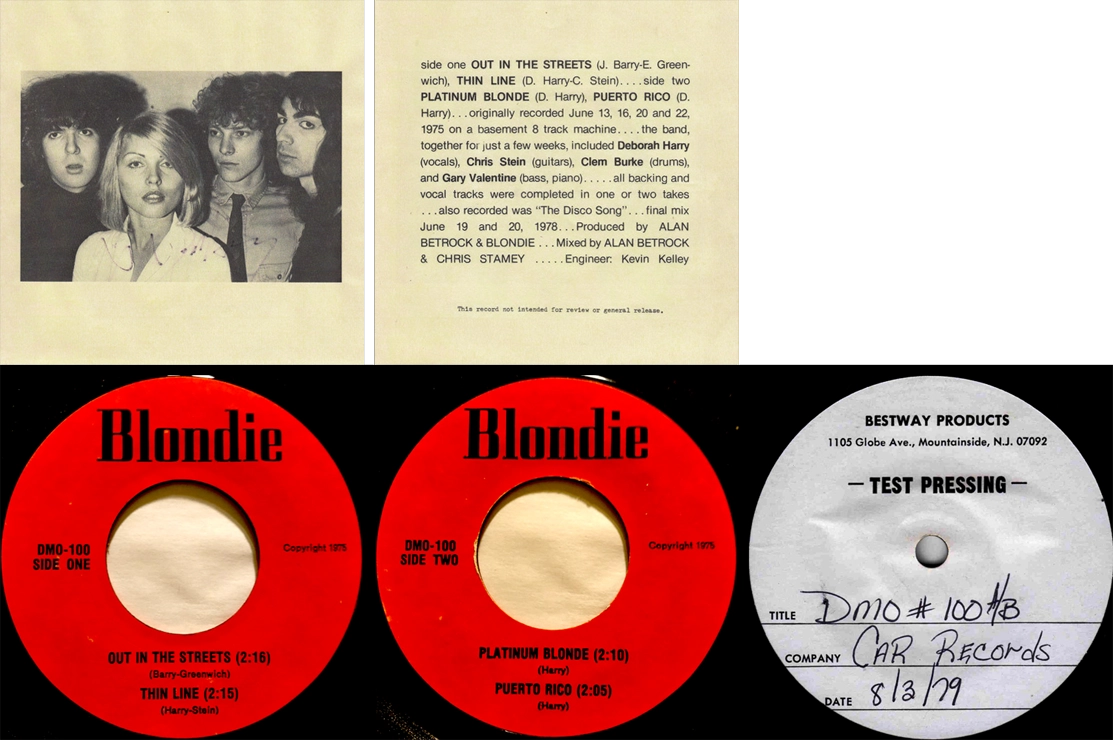
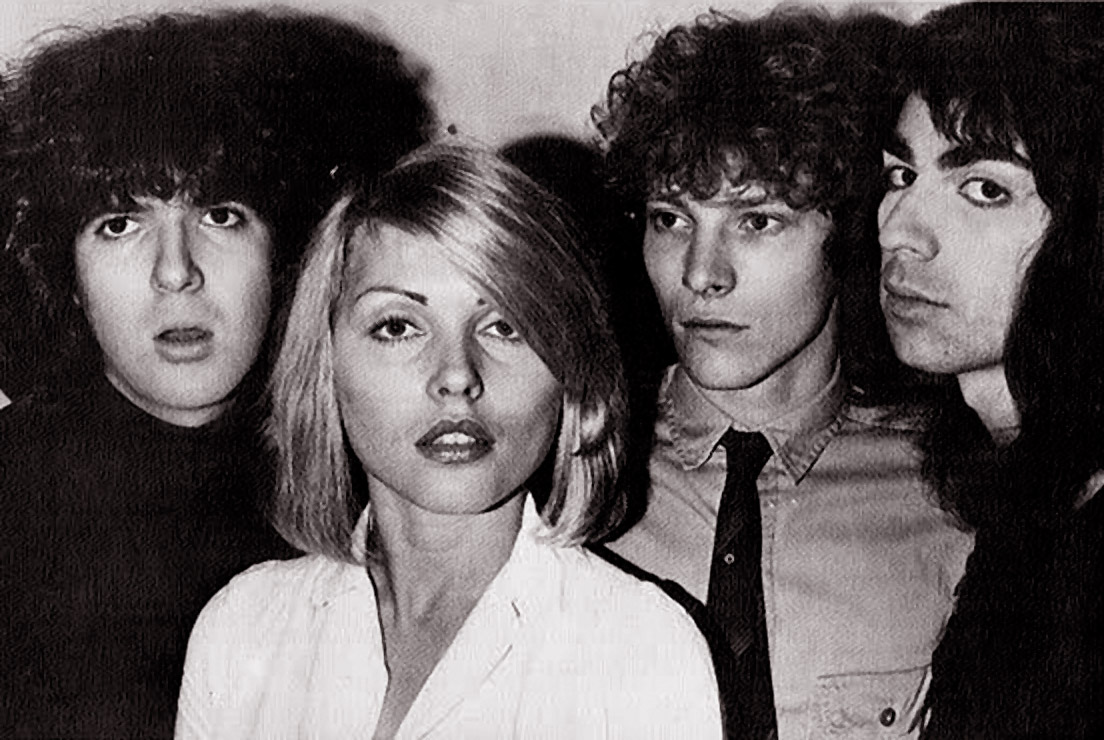
Betrock plays the demo to the few interested parties he knows in the business, but nothing comes of it. Betrock: And I called [Debbie] once and said, "Well, look: I'm working with you and The Marbles, and The Marbles can play live and I can't do both of you guys, so I'm gonna work with them." Nobody wanted to know Blondie, mainly because they weren't that great live. Quite honestly, if I was in a band, I don't know if I would have picked them as my open act either, back in those days. Debbie: We had no money and he didn't want to invest his own beyond a certain point, and that's what a band needs initially – someone who can invest a couple of thousand dollars and get their equipment straight, make a demo and present them. It didn't happen for us, and no one had any fucking money so he dropped us.
Since the band's hiatus, members of the Television/Patti Smith "other side" have been in charge of booking arrangements at CBGB. Gary: Terry Ork's [Television's manager's] datebook often seemed too crowded to allow space for Patti's sole serious female competitor. For the first month or so of my tenure, we were personae non gratae at CBGB. However, by this time, there were some other places to play. There was the forgettable Broadway Charly's [813 Broadway] and the equally unmemorable Brandy's. And there was Mother's, a gay bar on [267 West] 23rd Street, across from the Chelsea Hotel. Peter Crowley booked the shows there until he moved over to Max's Kansas City. Max's, which had been closed since 1974, re-opened in 1975 under the management of Tommy Dean. There was also The Performance Studios, where The Ramones had been playing since 1974. We did the rounds of these places. However, Blondie gigs resume at CBGB on July 4, alongside The Ramones.
Gary: Blondie circa the summer of 1975 had very little direction and our performances were not impressive. Debbie: We had a black conga player named Stepanji, who's since disappeared. We once played a gig at Mother's with a flute player and two conga players. For Kung Fu Girls I had some nine-foot-high cartoon monsters [housemate] Eduardo painted, which I kicked through, jumping à la Bruce Lee.
Some of the earliest footage of Blondie performing exists from the August 15 gig at CBGB. It is in black and white and shot on video by the Metropolis Video initiative. Set list: Martha and the Vandellas' Heat Wave; Man Overboard; Die Young, Stay Pretty; Little Girl Lies; The Miamis' A Girl Should Know Better; jazz standard I Cover The Waterfront; The Velvet Underground's Femme Fatale; The Miamis' He Sure Works Hard (At Lovin' Me); Just Go Away (with very different lyrics from those used later); The Attack Of The Giant Ants. Gary is notably subdued in this performance compared to later on.
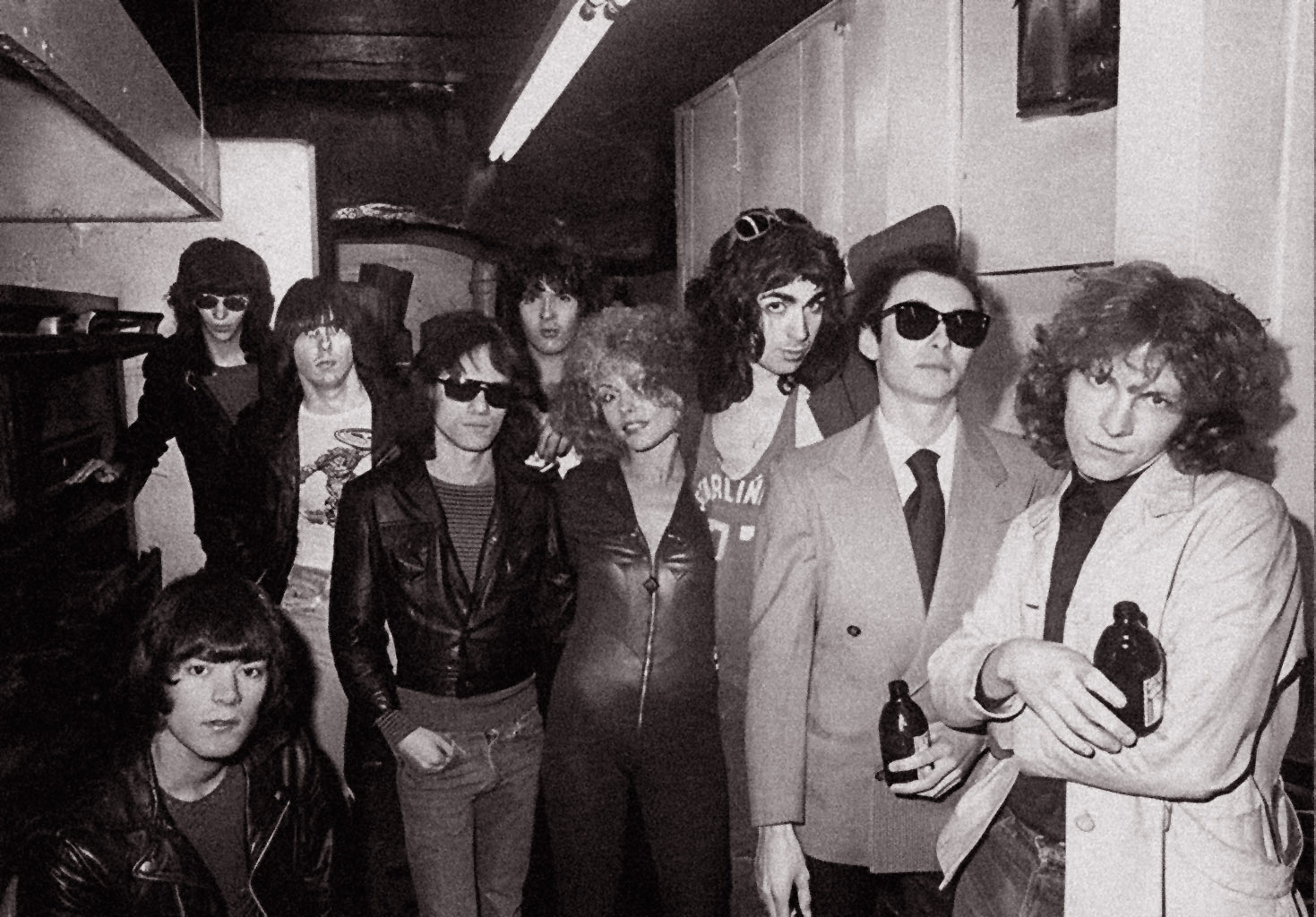
Other songs in the band's repertoire around this time include: The Velvet Underground's All Tomorrow's Places; Captain Beefheart's Crazy Little Thing; The Rolling Stones' Come On and Stupid Girl; Tom Verlaine's Venus; Elda's Mercer Street (a song left over from The Stillettoes); a song from the musical Happy End called Bilboa Song; Gloria Gaynor's Honey Bee; Gladys Knight's I've Got To Use My Imagination; Larry Williams' Bad Boy; Debbie's Love At The Pier; Gary's Slip Of The Razor; a Gary/Ronnie Toast collaboration, Starbeast (on which Debbie played keyboards); and the aforementioned Harry/Valentine Kung Fu Girls (a song originally intended as a gift to Johnny Thunders and The Heartbreakers).
In early November, the band is banned from CBGB (again) after an argument between Gary and Hilly Kristal (proprietor) about the band's bookings there. They fill in by playing at Max's, Mother's, Monty Python's, and Brandy's.
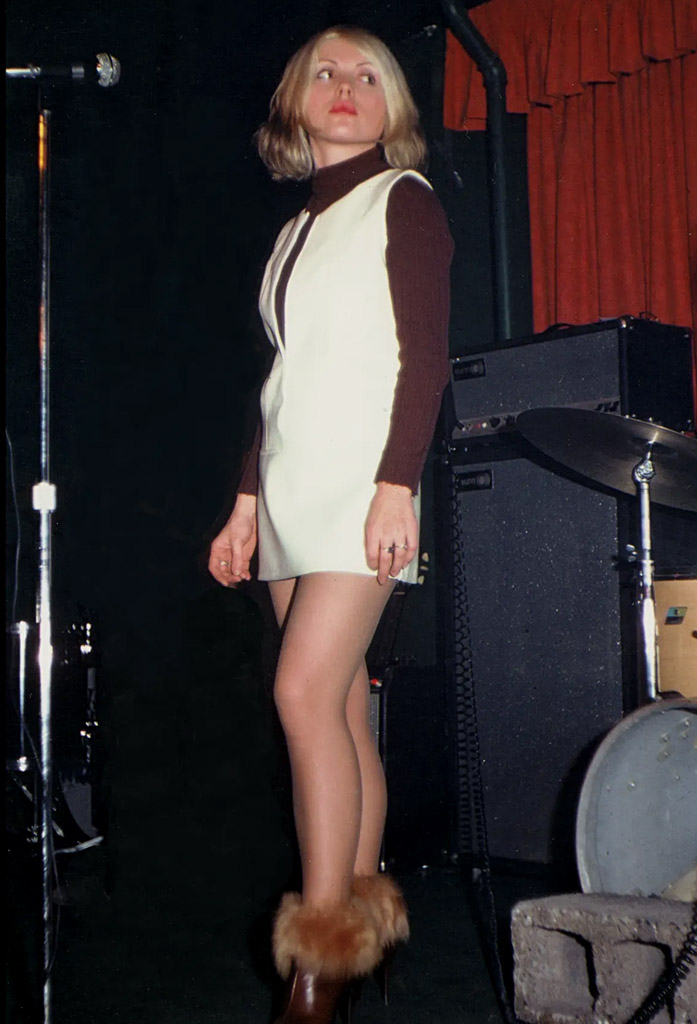
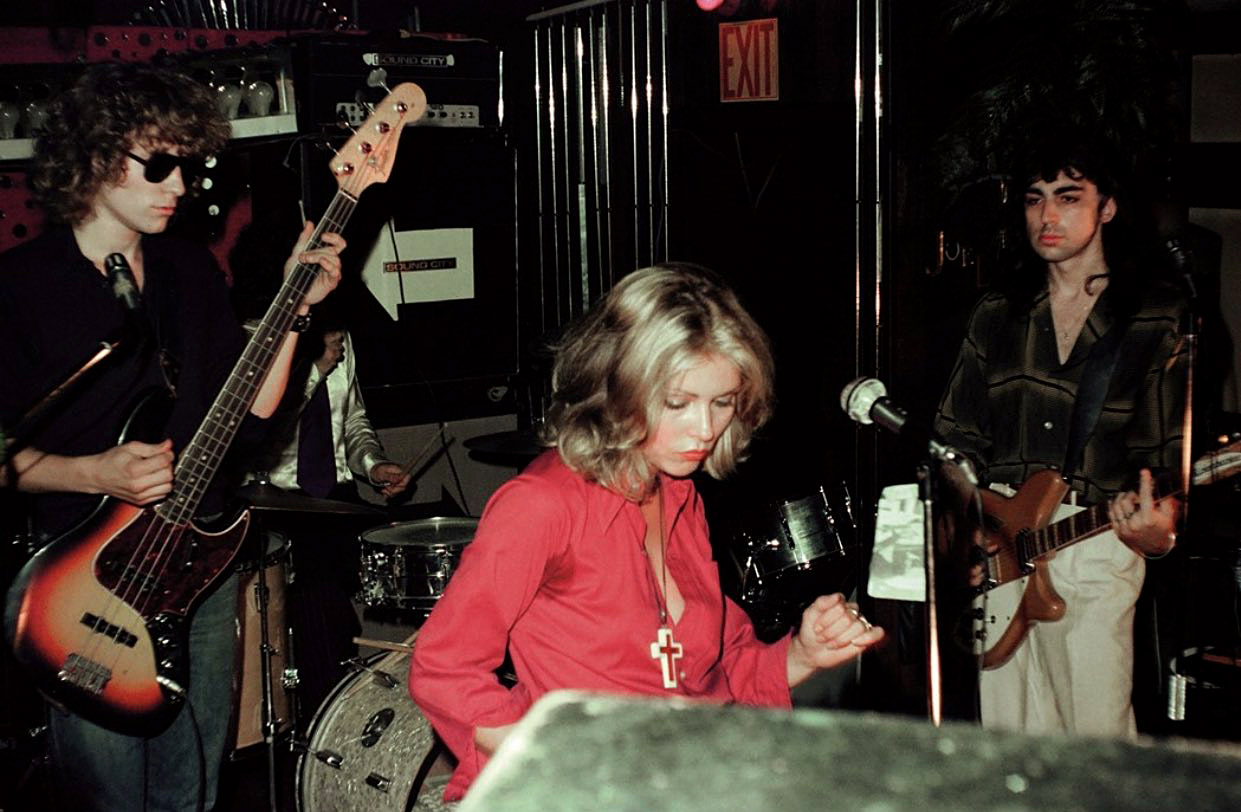
The New Musical Express writes on November 8, in the form of Charles Shaar Murray reviewing a gig at The Performance Studios with Blondie and The Ramones: She [Debbie] has what could politely be described as a somewhat suspect sense of pitch, but her charm lies in the fact that she's a kid who's pretending desperately hard to be a star and who's aware of it. Sadly, Blondie will never be a star simply because she ain't good enough, but for the time being I hope she's having fun.
One thing the Betrock demo (on which both Gary and Clem had played keyboard) shows is that the band would do better adding a keyboardist into their mix. Jimmy: I think my sister [Donna Destri] told Debbie, "You know, he plays piano." And I said, "But I don't have one. I have this natty old organ, and I can fill in on bass if you need that." They asked me if I had any tunes. I had two tunes, Gary Valentine had two, and they had six, so we had an album's worth of material. Gary: Initially we thought a piano would provide the extra layer of sound we needed, but Jimmy didn't have a piano. What he did have was an ancient Farfisa organ, the kind like garage bands in the sixties used. By seventies standards it was rinky-dink, but we liked it. We were in any case veering more and more towards a distinct retro sixties sound, so Jimmy's obsolete keyboards were exactly what we needed. Jimmy makes his live debut with the band on November 8 1975 at Monty Python's (some sources say Mother's).
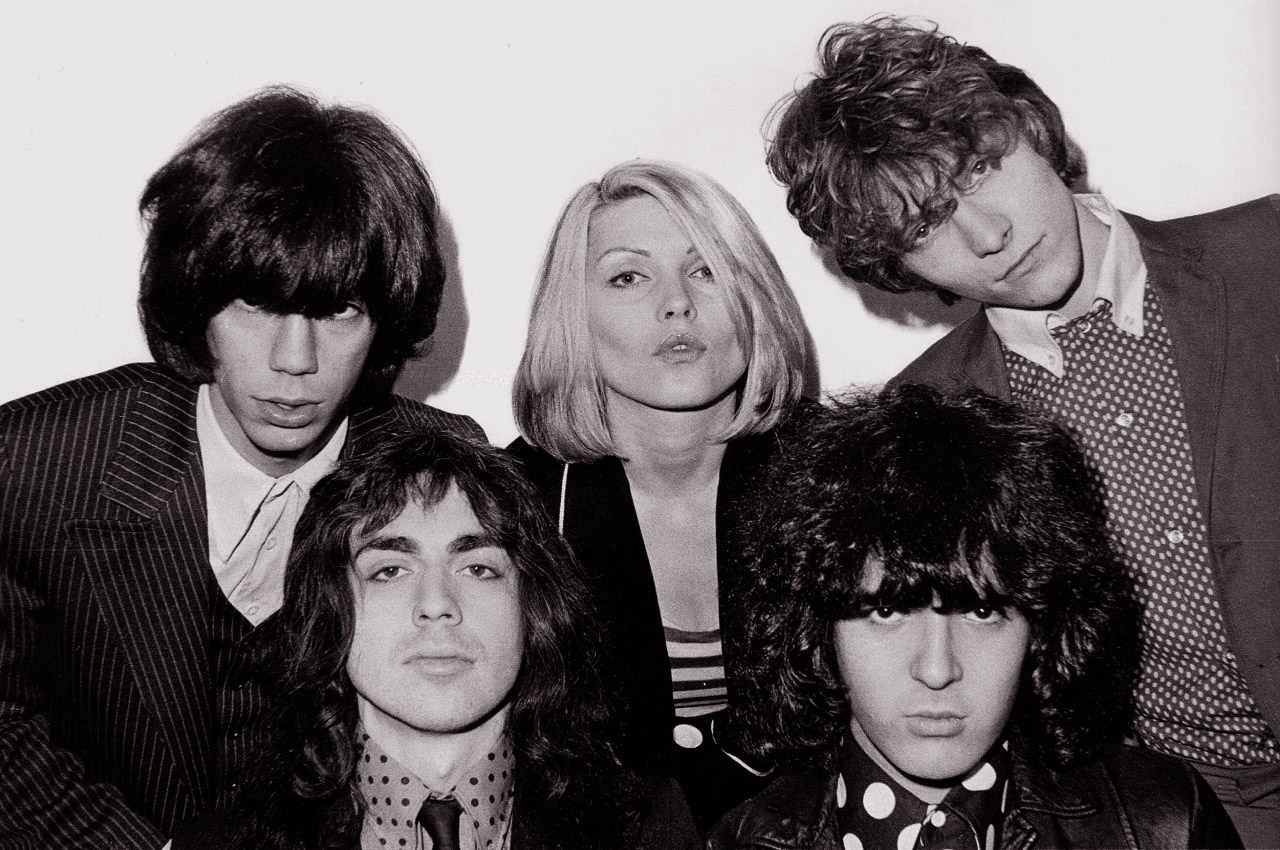
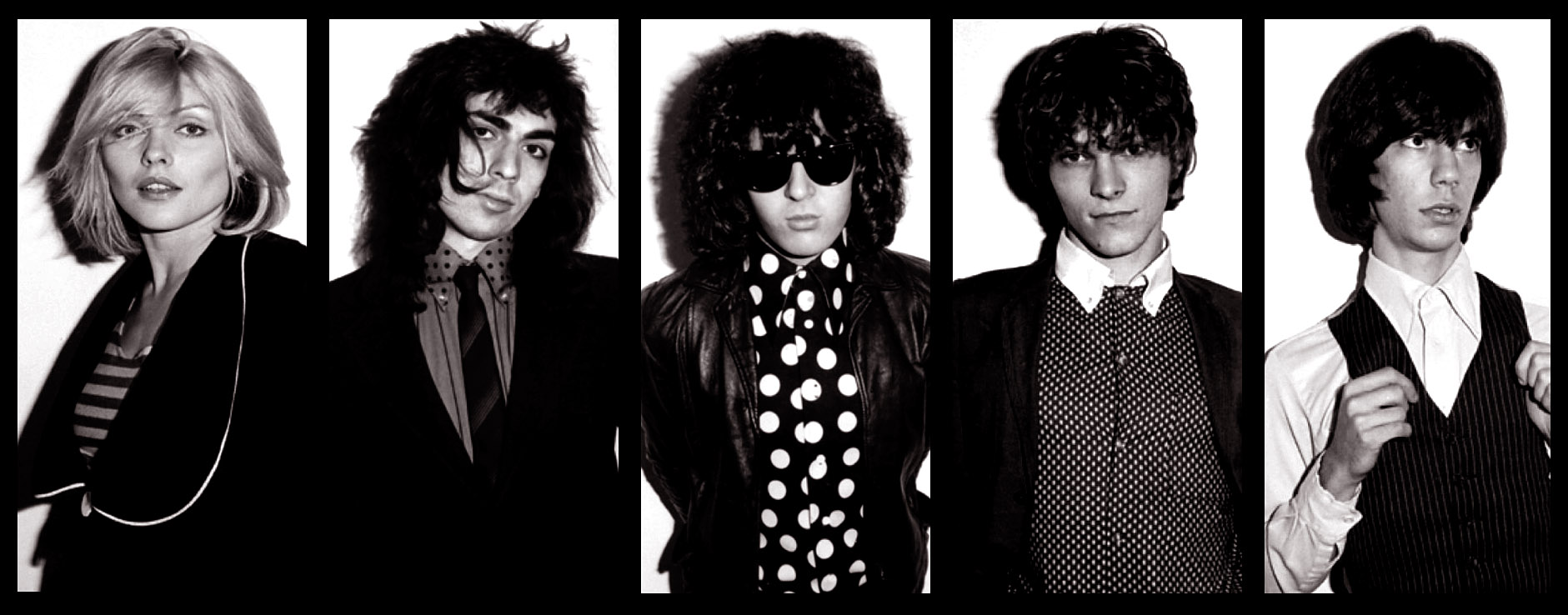
Chris: We found a store right on the main street in Hoboken, New Jersey, that was a treasure trove of sixties men's fashions. Tab-collared shirts, pegged pants, pointy shoes, narrow ties, the whole nine yards. This went a long way toward shaping the band's design aesthetic as we attempted to embrace the Mod Rat Pack look and back away from the bell-bottomed excess of the seventies.
Amos Poe and Ivan Král make a film documenting the scene at CBGB, called The Blank Generation. Blondie appears with two of the songs from their demo, Platinum Blonde and Out In The Streets, laid over shots of them performing, and cavorting in their loft on 266 The Bowery (and pushing Debbie's recalcitrant Camaro up the street). Jimmy is present in the loft footage but isn't included in the CBGB stuff. The movie debuts at on December 11 at Max's Kansas City, accompanied by a Blondie performance.
Early December 1975 and the band gets to play accompanying music in some revival performances of Jackie Curtis' 1971 underground play Vain Victory: The Vicissitudes Of The Damned, an innuendo-laced bisexual romp vaguely following the plot of The Little Mermaid and made up of references to old movies. Debbie plays a character called Juicy Lucy. Tony Ingrassia directs; the play is staged in a loft space in Tribeca. Chris: I found these shiny blue three-piece sharkskin suits in a junk store on Broadway, and the boys wore those.
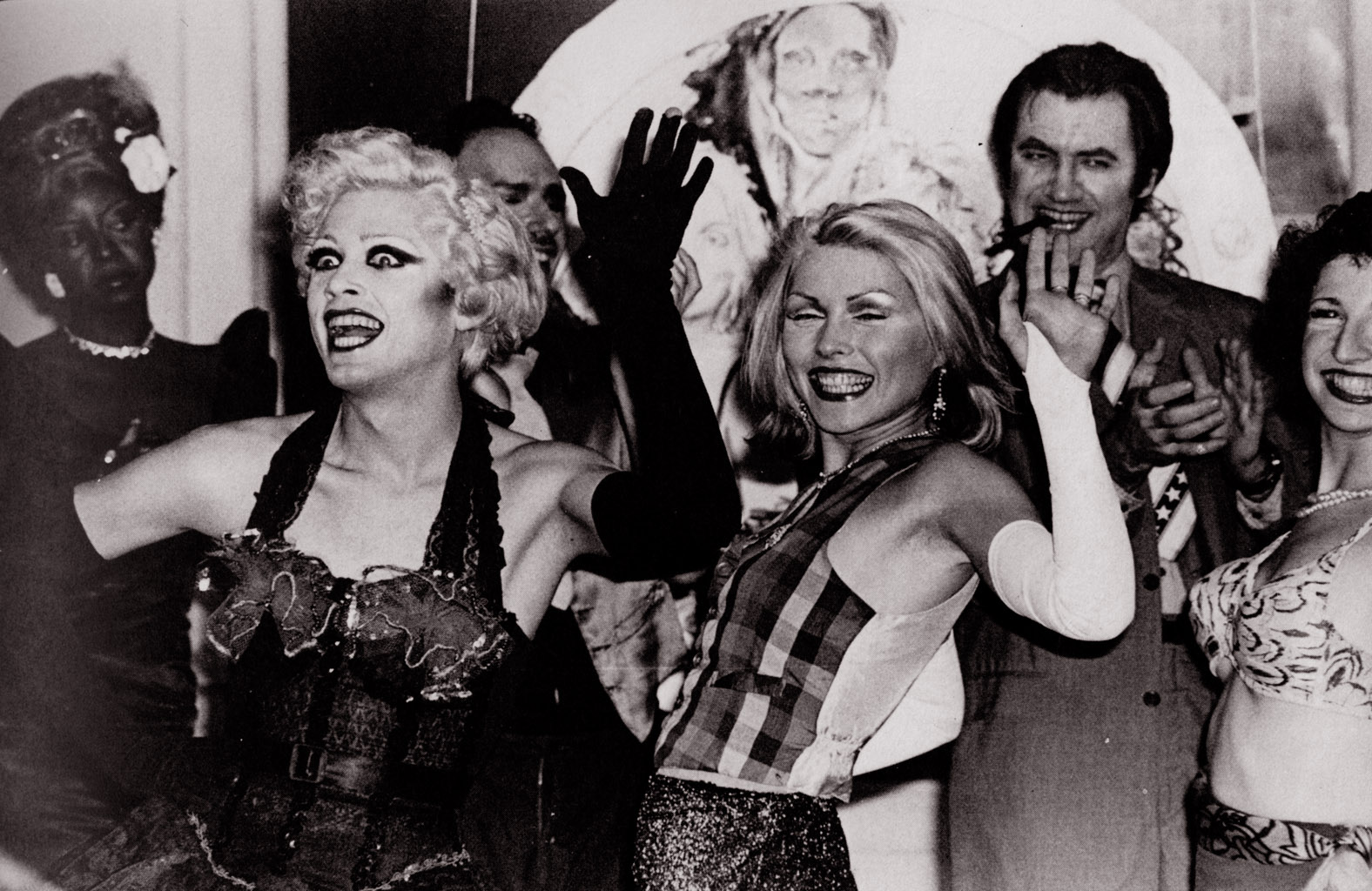
Clem departs to the UK for an extended six-week Christmas break to see his girlfriend, who is studying at Oxford University, and to check out the music scene. Meanwhile the rest of the band spends the weeks rehearsing and writing new songs. Gary pens X Offender (then called Sex Offender before a record-company enforced softening). Gary: The idea for the song came to me one night in Max's Kansas City. I immediately left and returned to the Blondie loft, where I picked up the guitar and came up with the melody, chord progression, and the lyrics to the chorus. Debbie wrote the lyrics to the verses, turning it into a song about a hooker falling in love with the cop who arrests her. In some way I never understood, it is also supposed to be about my experience being arrested for statutory rape when I was eighteen. The song would later become Blondie's first record.
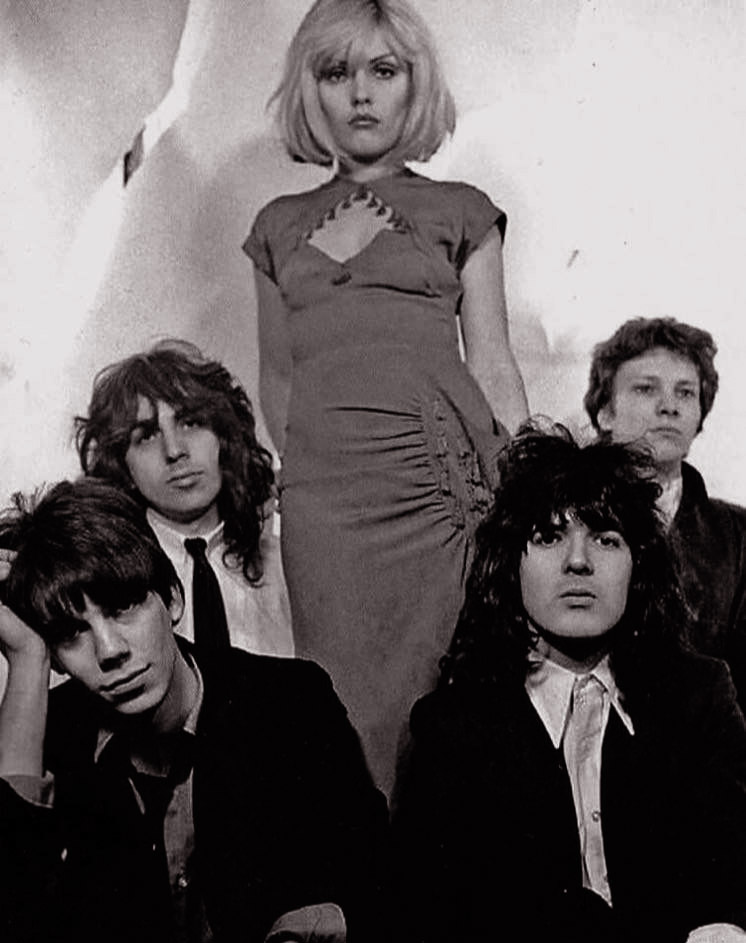
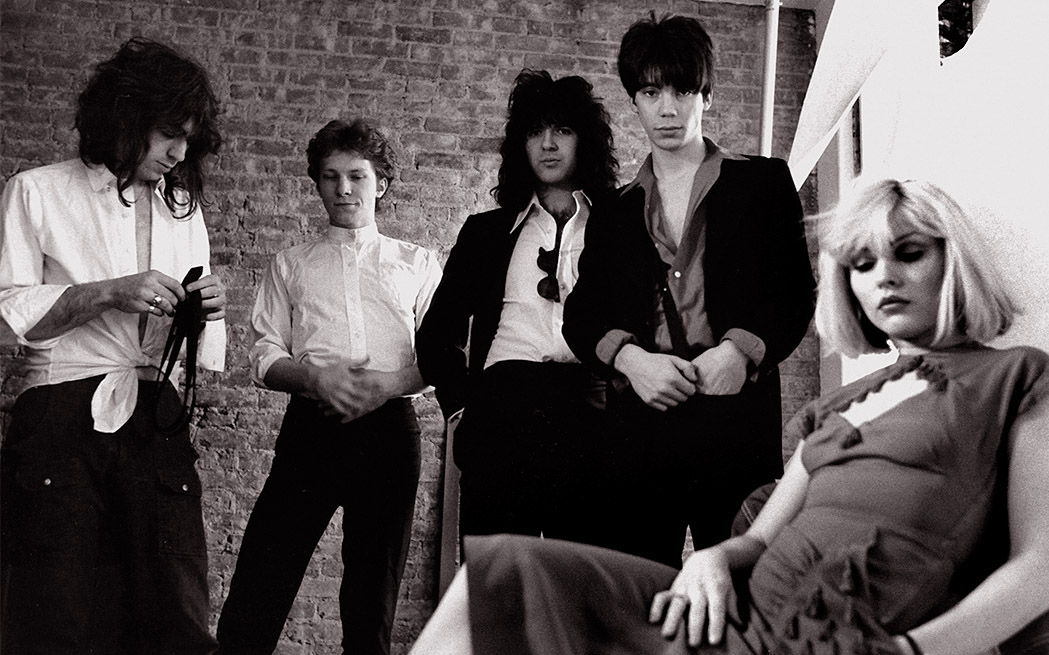
Sanctions against Blondie are lifted at CBGB and they begin performing there again, starting with a three-day Valentine's Weekend special on February 13. Alan Betrock's new magazine, New York Rocker, is suitably impressed.
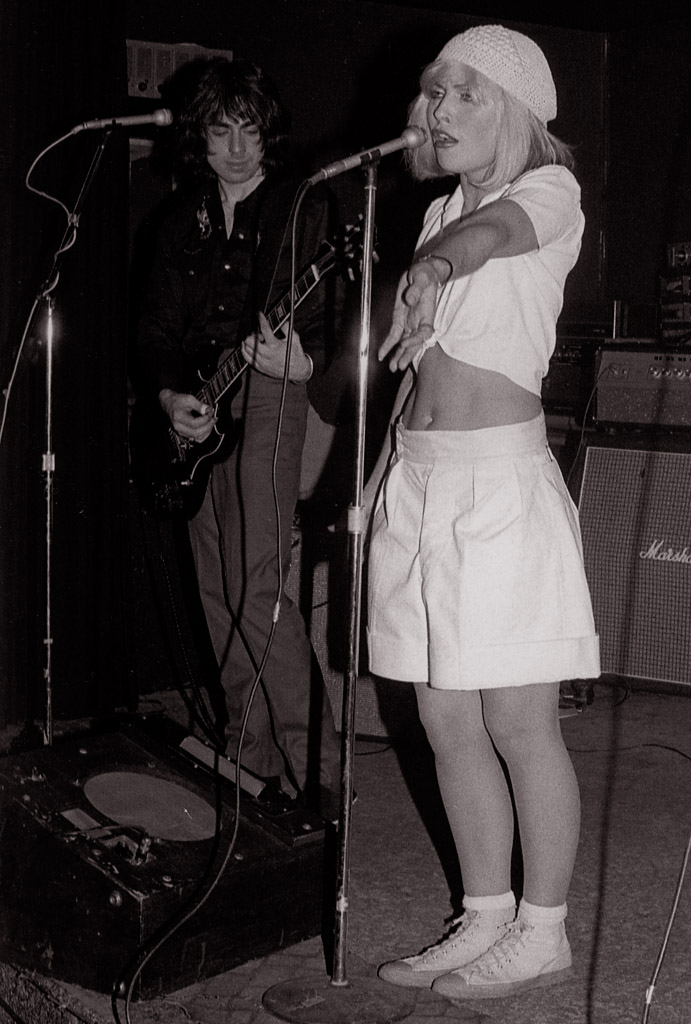
Marty Thau (ex-manager, New York Dolls): Craig [Leon] and I became good friends when we discovered that we had similar tastes in music and also people, which was an important part of it as well. Almost every night we would meet at about eleven o'clock, then go to CBGB's and clock all the different groups who were playing there. I contacted [Richard Gottehrer] and we got into a discussion about what was going on downtown. So we met and went downtown and Richard immediately fell in love with what he saw, and understood.
Gottehrer: Hilly Kristal came up to me and said there was someone who wanted to meet me. It was Debbie. She'd heard about my idea for the album [a record showcasing CBGB acts that the bigger names there ended up boycotting] and asked if Blonde could be on it. I told her that I'd need to have them play for me and then decide. I set up a rehearsal studio somewhere uptown and showed up a bit late – I didn't expect much. Once they started playing and I heard the songs, I was hooked. I remember smiling from the first moment till the last song ended. Their songs were better in some instances than their ability to play them, but they played with such spirit that it made no difference.
Thau: Shortly afterwards, we formed Instant Records, the three of us. Then we thought, "Who should we sign? Who would be the best group?" We unanimously agreed it was Blondie.
Instant Records takes Blondie into Bell Sound Studios, 237 West 54th Street, to rehearse and shape their material with a view to making a studio album.
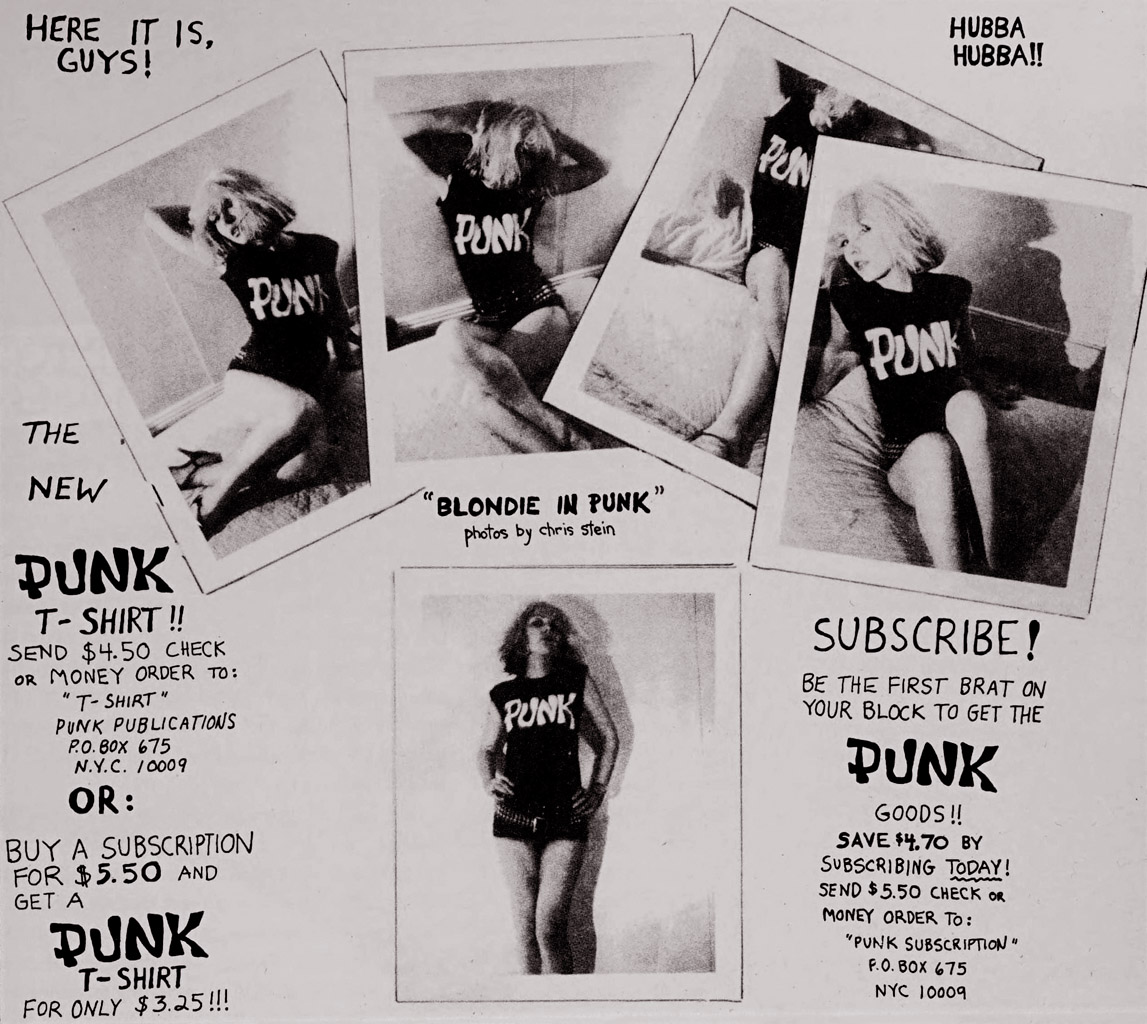
In May 1976, Blondie enter Plaza Sounds studio above Radio City Music Hall, 55 West 50th Street, and record two tracks for their first single, X Offender and, for the B-side, In The Sun (Chris: In The Sun was inspired by Summer Means Fun that Jan & Dean recorded, but the original was done by Bruce & Terry.) Both are in different versions from those which would later appear on the band's first album, with In the Sun utilizing a completely different vocal take. Chris: He [Leon] had a lot more of his fingers in there than Gottehrer. That first single is like eighty decibels louder than Blitzkrieg Bop; it's mixed incredibly hot. It's so compressed – that's how we got the wall-of-sound effect; compression squeezes everything and makes it mid range. Craig Leon, re: the two versions of X Offender: It's pretty much the same recording but two different mixes. There's the one [the single version] with the double-tracking vocals. The later version is the album mix, which is much tamer.
Gary: Craig wanted to create a Phil Spector effect, and this meant creating a massive wall of sound. He also wanted to get as authentic a "surf" feel for my guitar as he could. He set up my amplifier at the end of a long hall, way out of the studio, and cranked up the volume, making the guitar sound as if it were recorded in a cavern. Chris was unhappy at playing bass [on X Offender], groaned most of the time and threw temper tantrums.
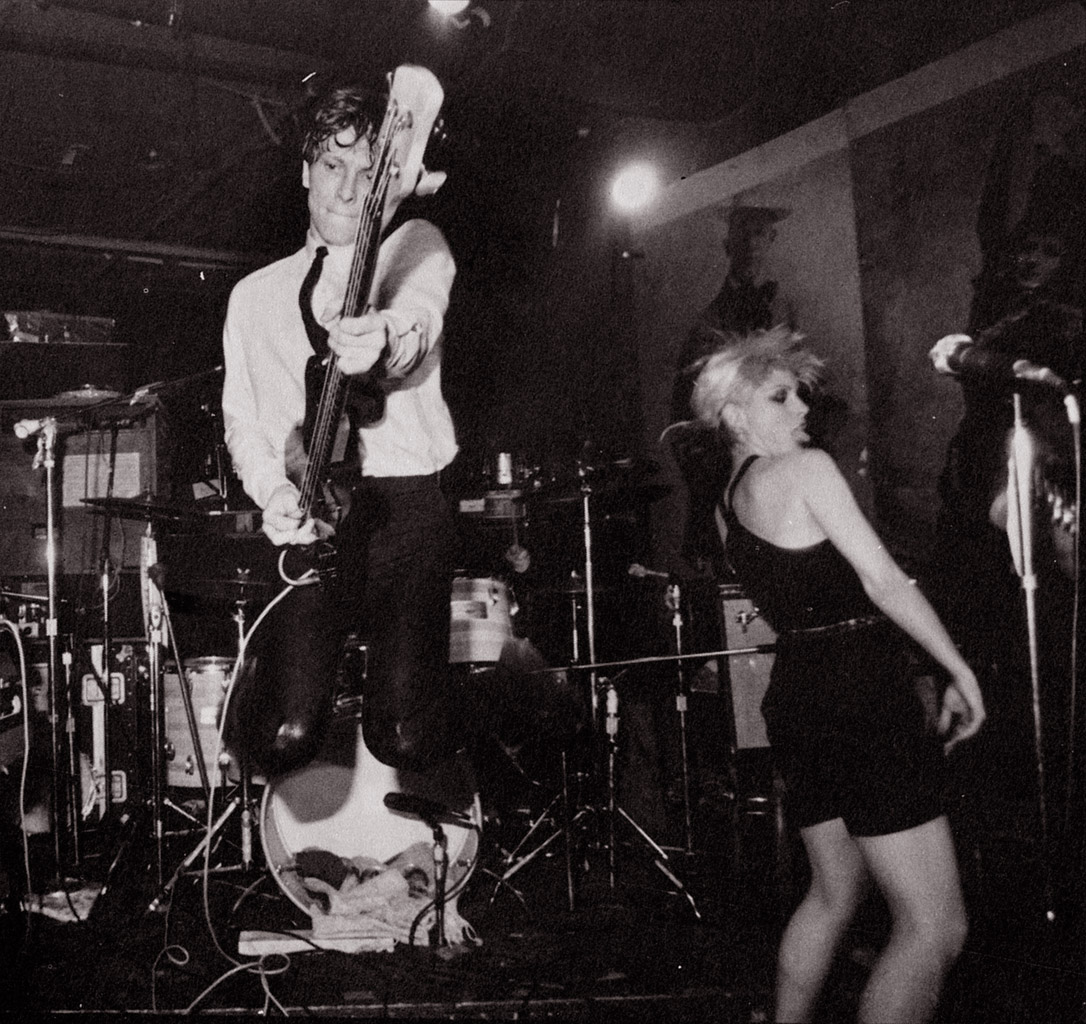
Thau: Nobody was interested in [releasing] Blondie. There were always various comments like, "She looks great and the band suck," or, "The band's great but she's too sweet," or whatever. But I knew Howard Rosen, who was head of promotion at Private Stock. Private Stock was not a particularly hip label – actually they were a ridiculous excuse for a record company and sucked big time. Richard and I believed that if we could just get a Blondie record on the market through them, or anyone else for that matter, there'd be such a tremendous street buzz and reaction to it that there would be an immediate interest for an album. I insisted that an option for an LP had to be written into the contract, to be exercised no later than thirty days after the release of the single. [They] couldn't wait to exercise the option when rave reviews for the single immediately started pouring in. Private Stock owner, Larry Uttal, really had no idea what he had on his hands, or what to do with it.
According to legend, Frankie Valli (a co-owner of Private Stock) himself turns up at CBGB in a limo to see the band's show before he green-lights the record deal. Debbie: The limo sat waiting for him among the bums and winos while he watched us play.
The record is released on the Private Stock label on the June 17. Gary: Rodney Bingenheimer from KROQ in Los Angeles played it over and over again and telephoned Debbie in New York to tell her how much he liked it.

July sees the band playing some rare gigs outside New York, at The Club, 823 Main Street, Massachusetts; the Stone Pony, 913 Ocean Avenue North, Asbury Park, New Jersey; and the Rathskeller, 528 Commonwealth Avenue, Boston.
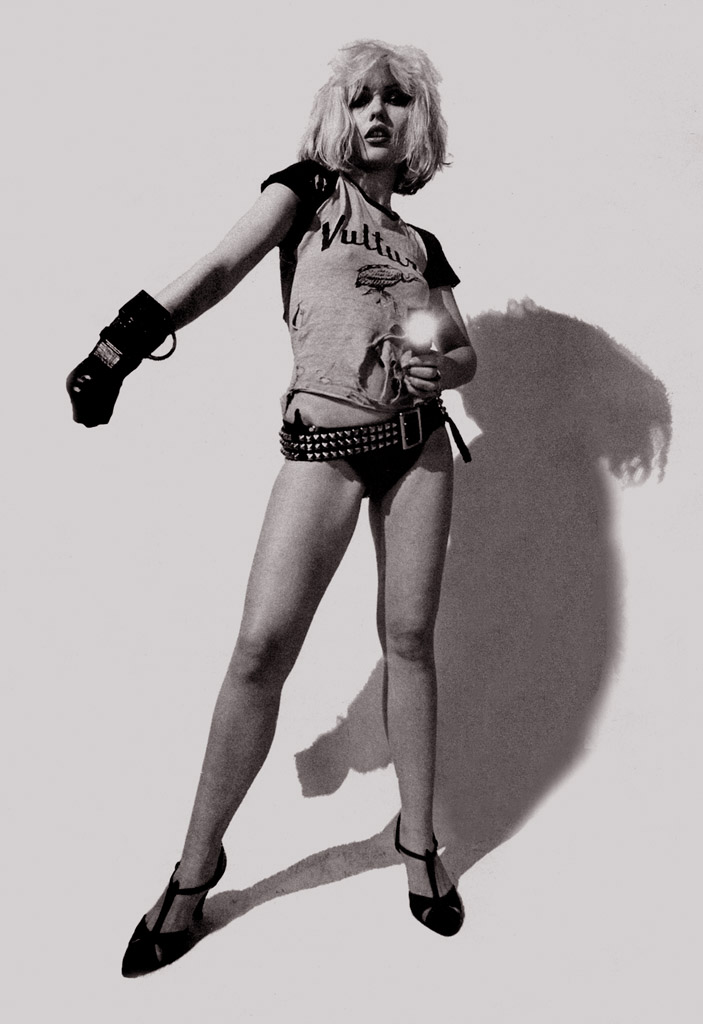
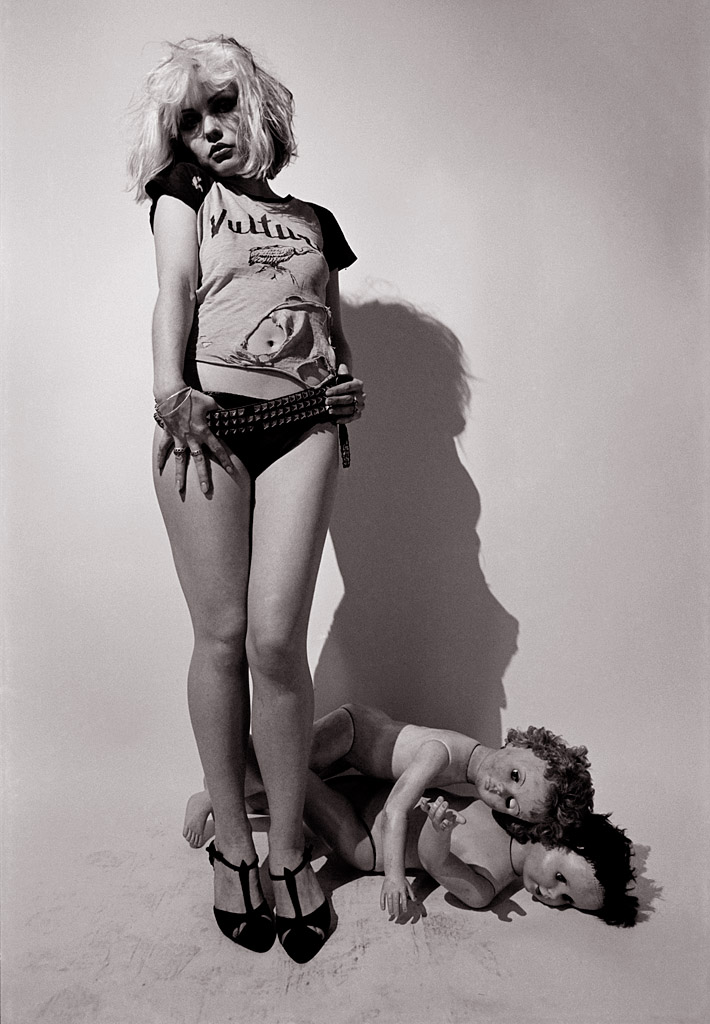
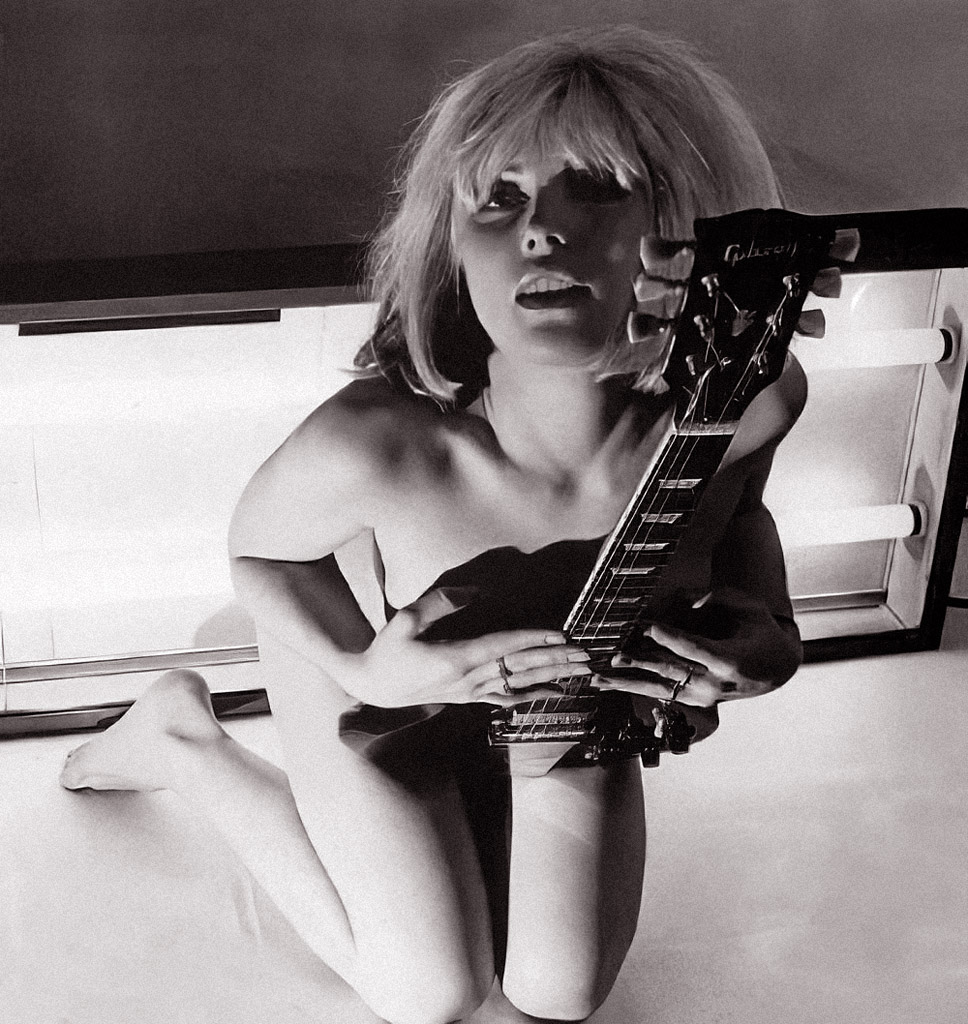
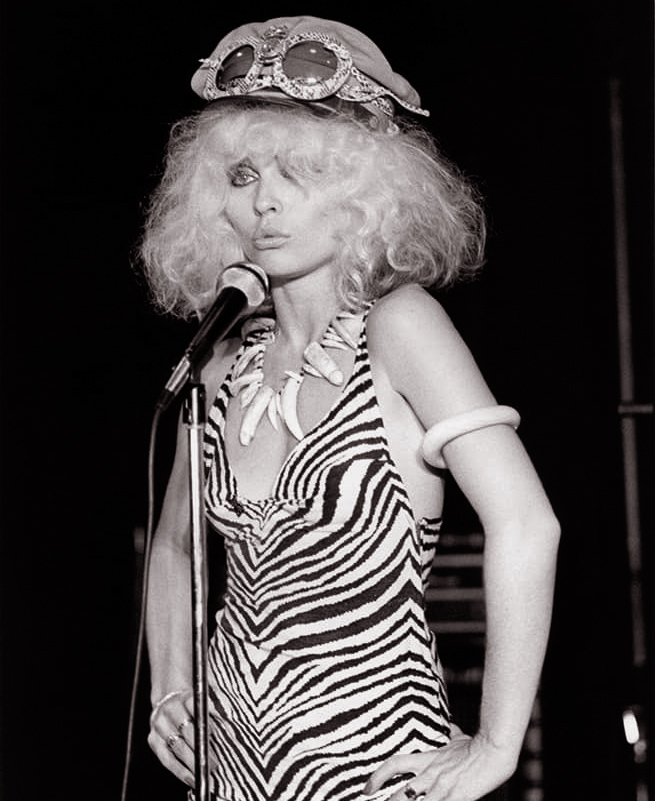
Around this time, members of Blondie appear in a "fumetti" captioned photo story, The Legend Of Nick Detroit, which later appears in the October edition of Punk magazine. Also featuring: Richard Hell, David Byrne, Tina Weymouth, Chris Franz, David Johansen, Anya Phillips, and Roberta Bayley. Debbie was usually named in Punk as "Debbie Blondie" (see: The Ramones), not a good start considering the later "Blondie is a group" trouble the boys would have being recognized as more than just a backing band. (Debbie would also later feature in two other Punk photo stories: the brief Disposable Devo (in which she attacks members of Devo with a broom) and the epic and well-known Mutant Monster Beach Party.)
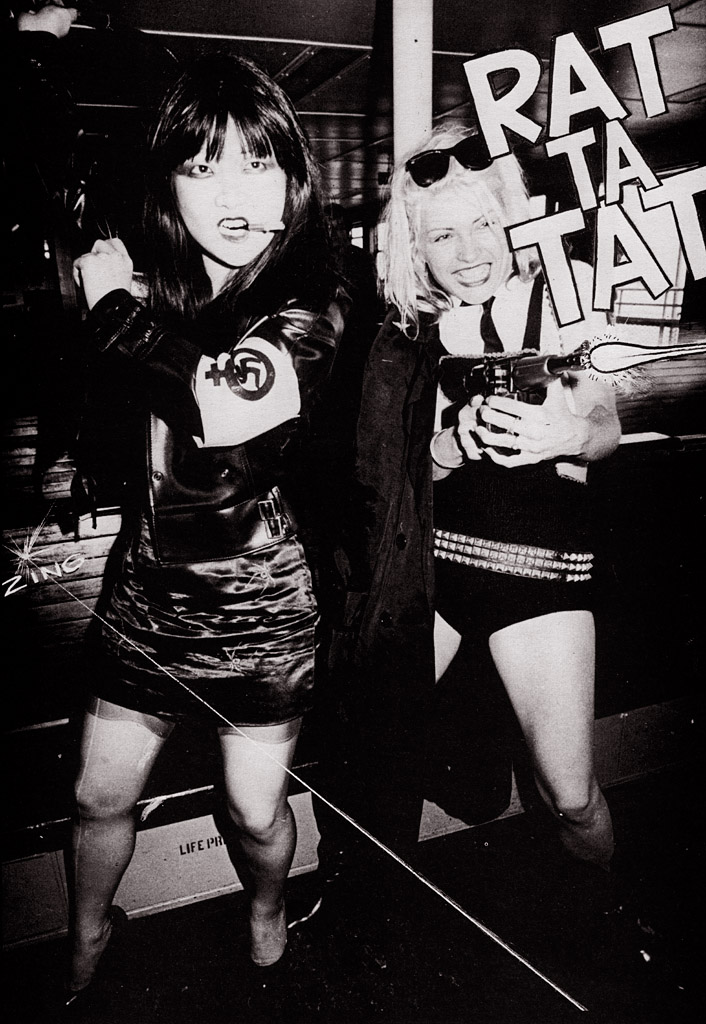
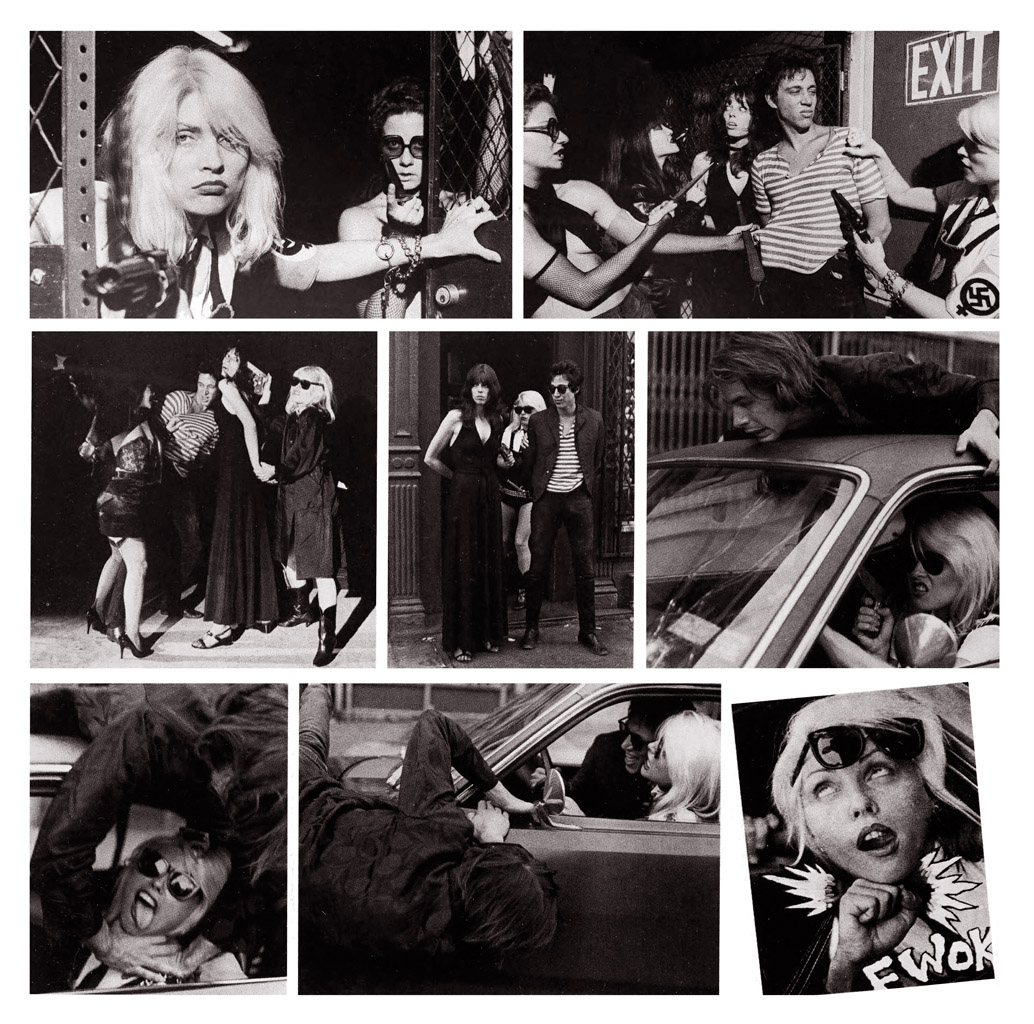

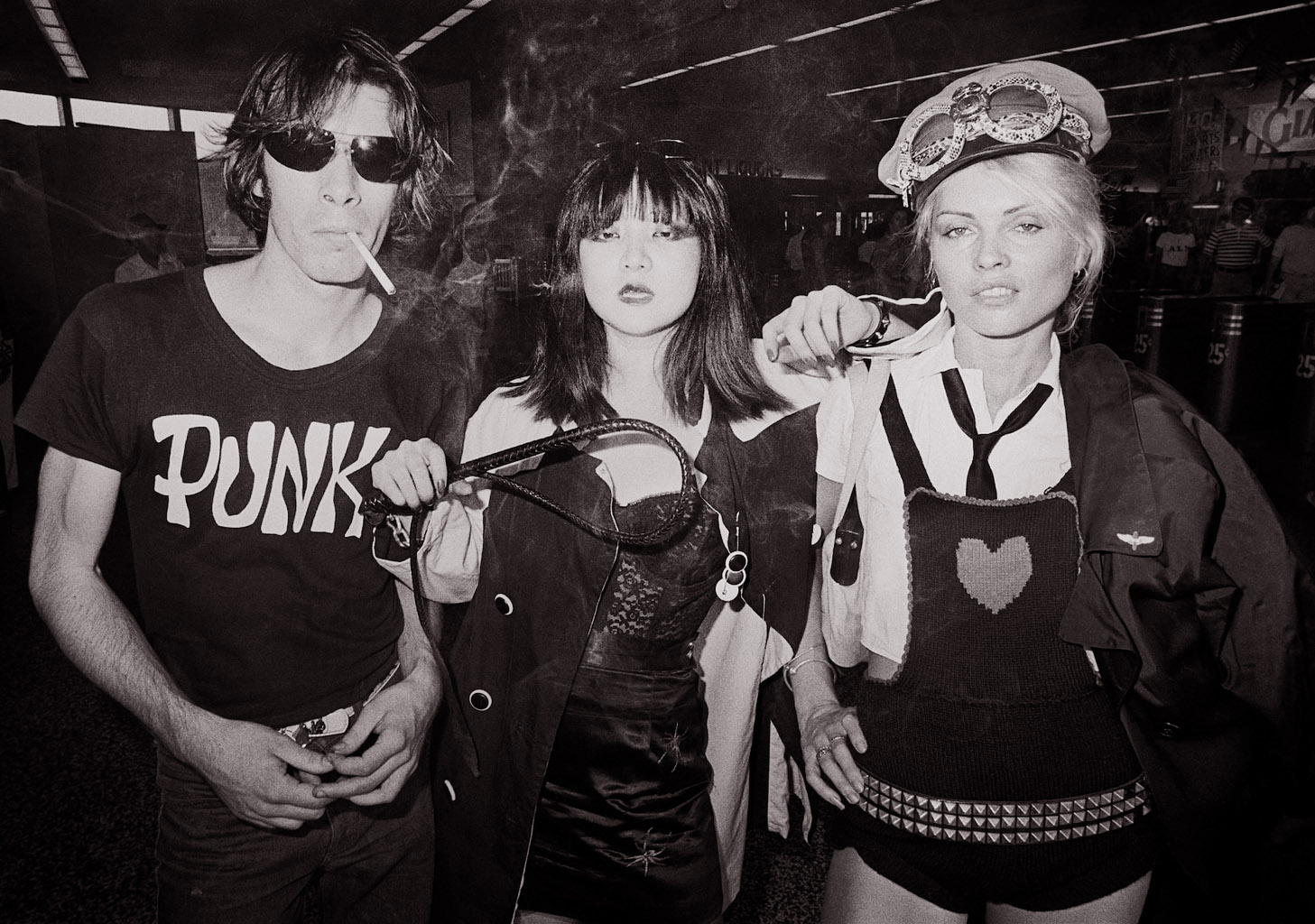
August through September 1976 sees Blondie and Richard Gottehrer at Plaza again, this time recording a full album. It is released in January 1977. But that's another story...
(Compiled by Steve Phillips, 2024. Comments or corrections, please e-mail: Click to see e-mail address.)
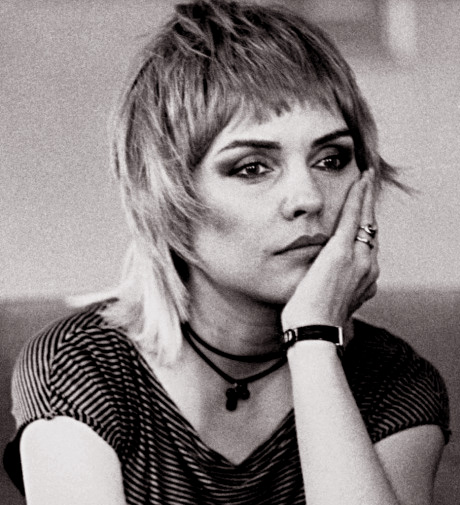
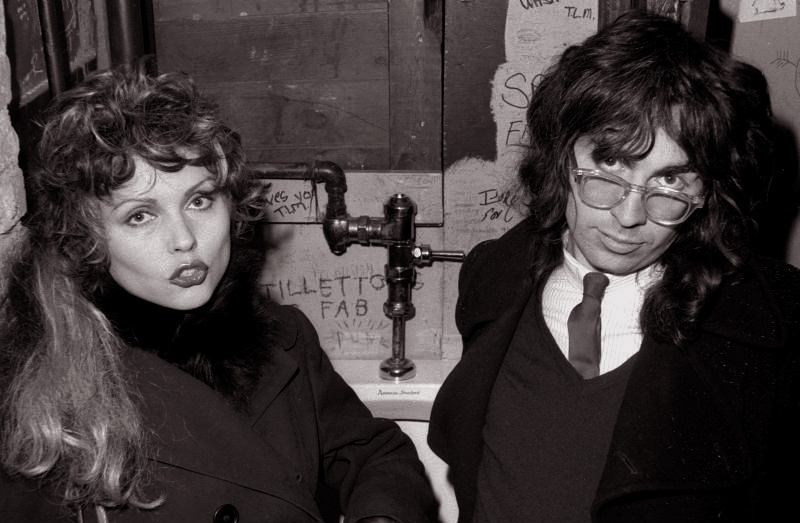
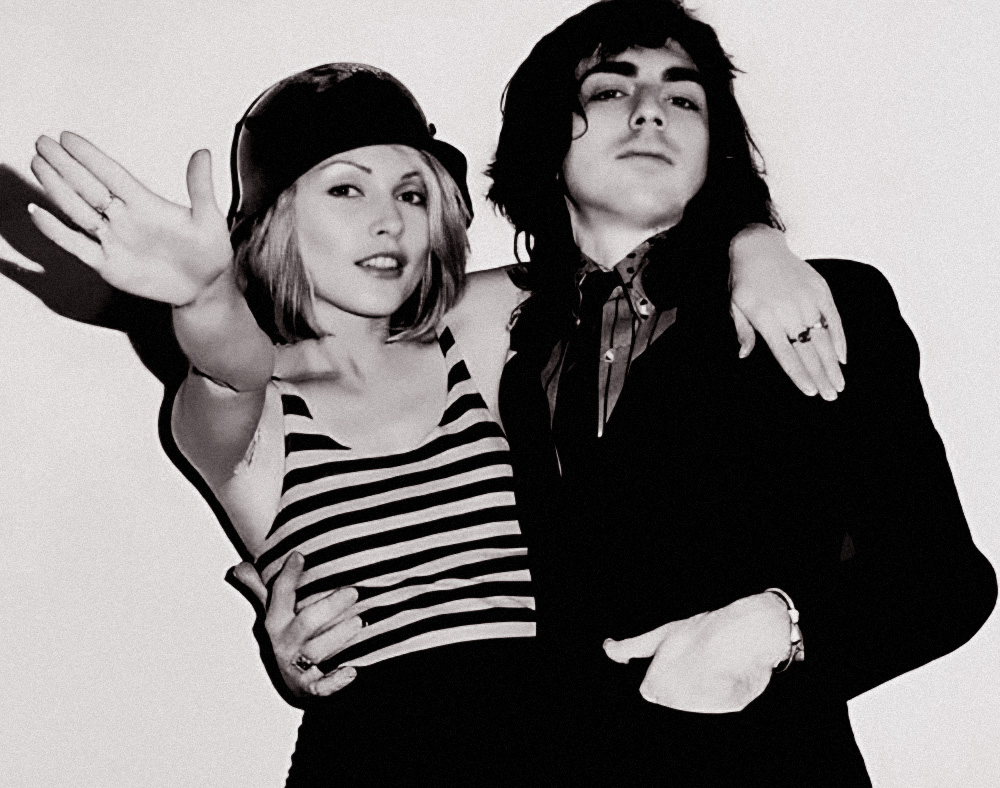
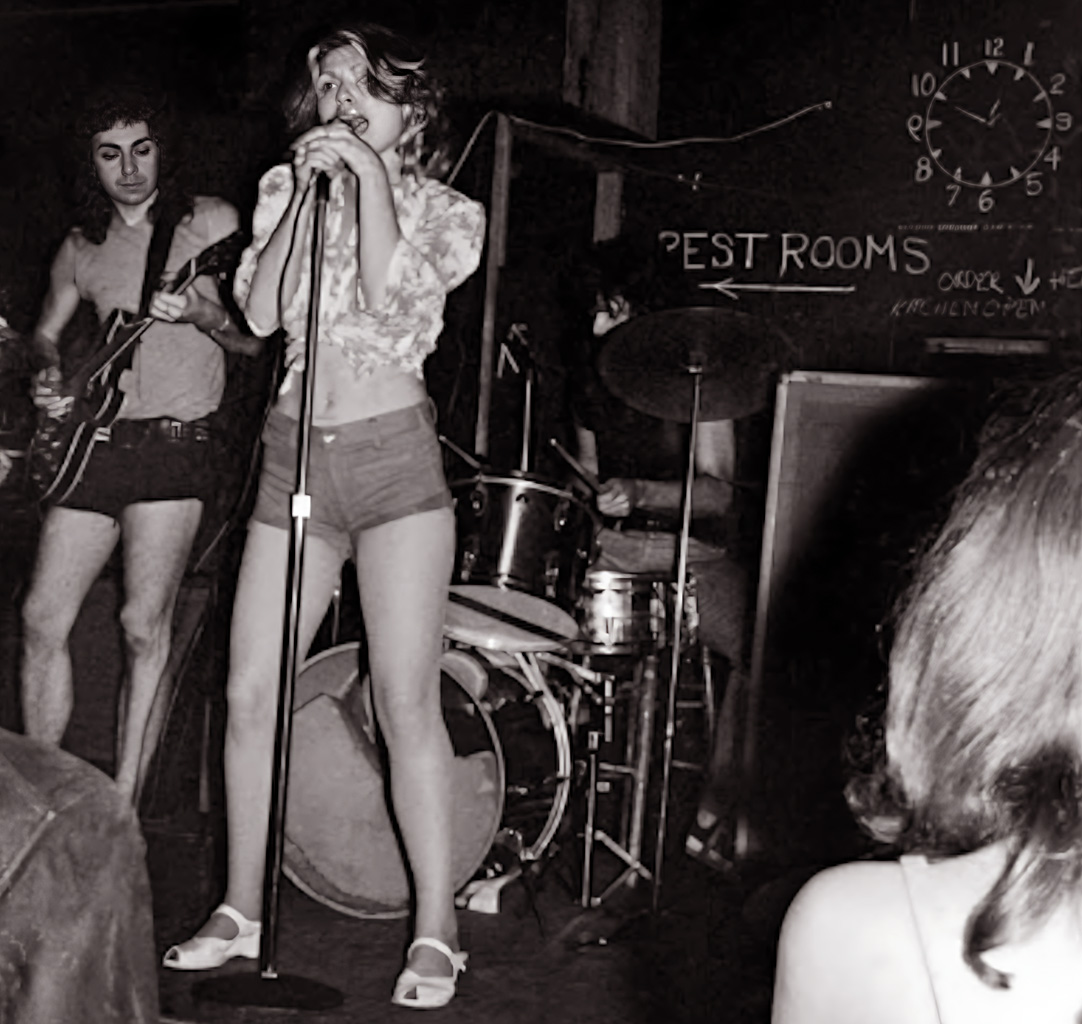
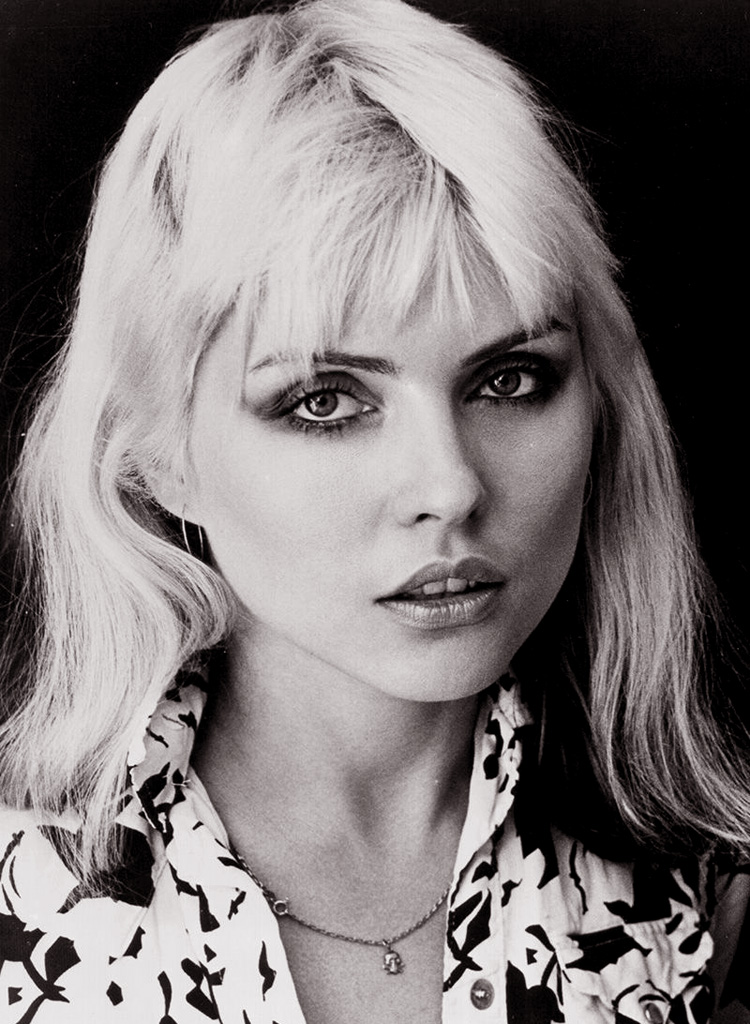
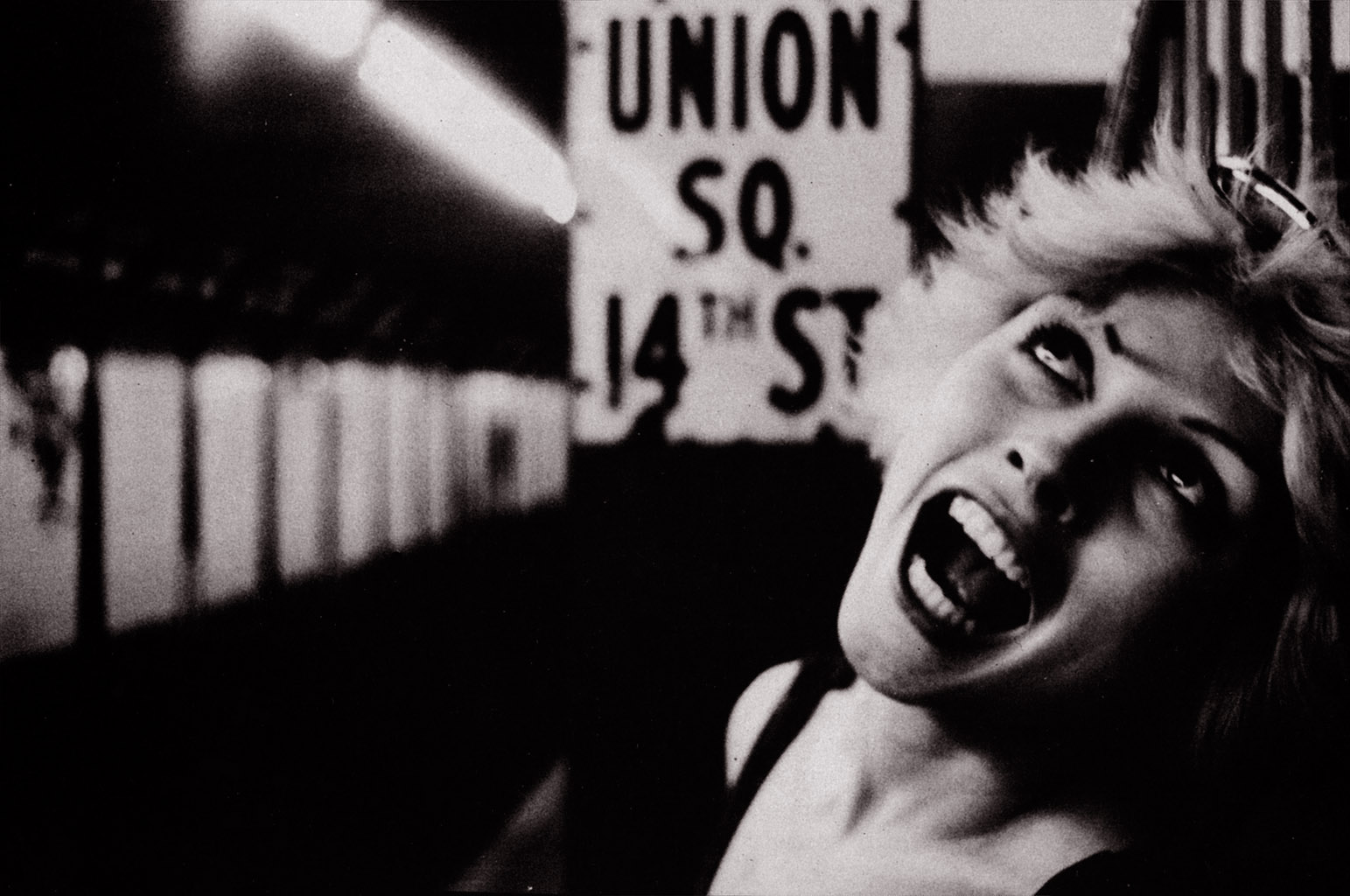
(Comments or corrections, please e-mail: Click to see e-mail address.)
